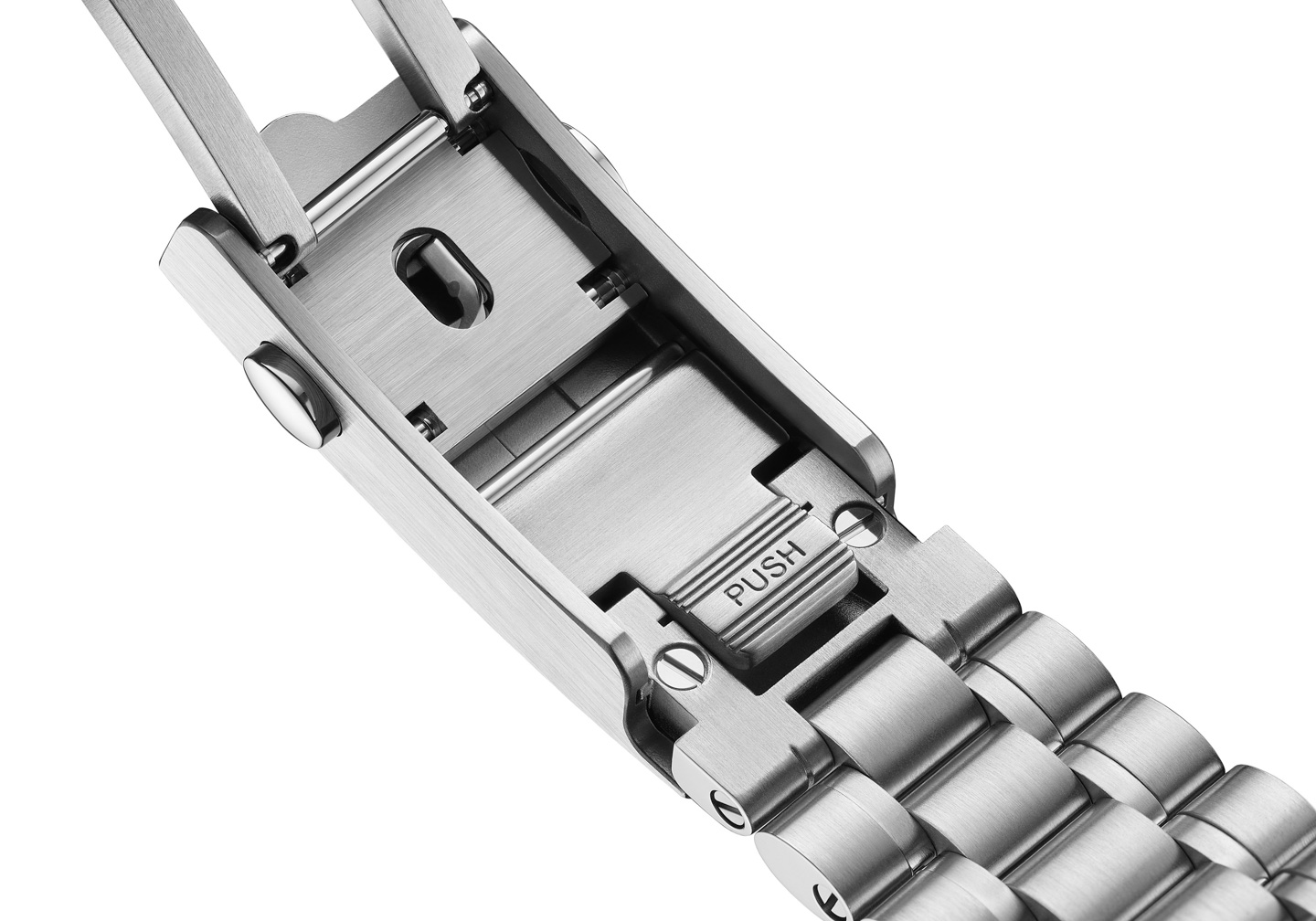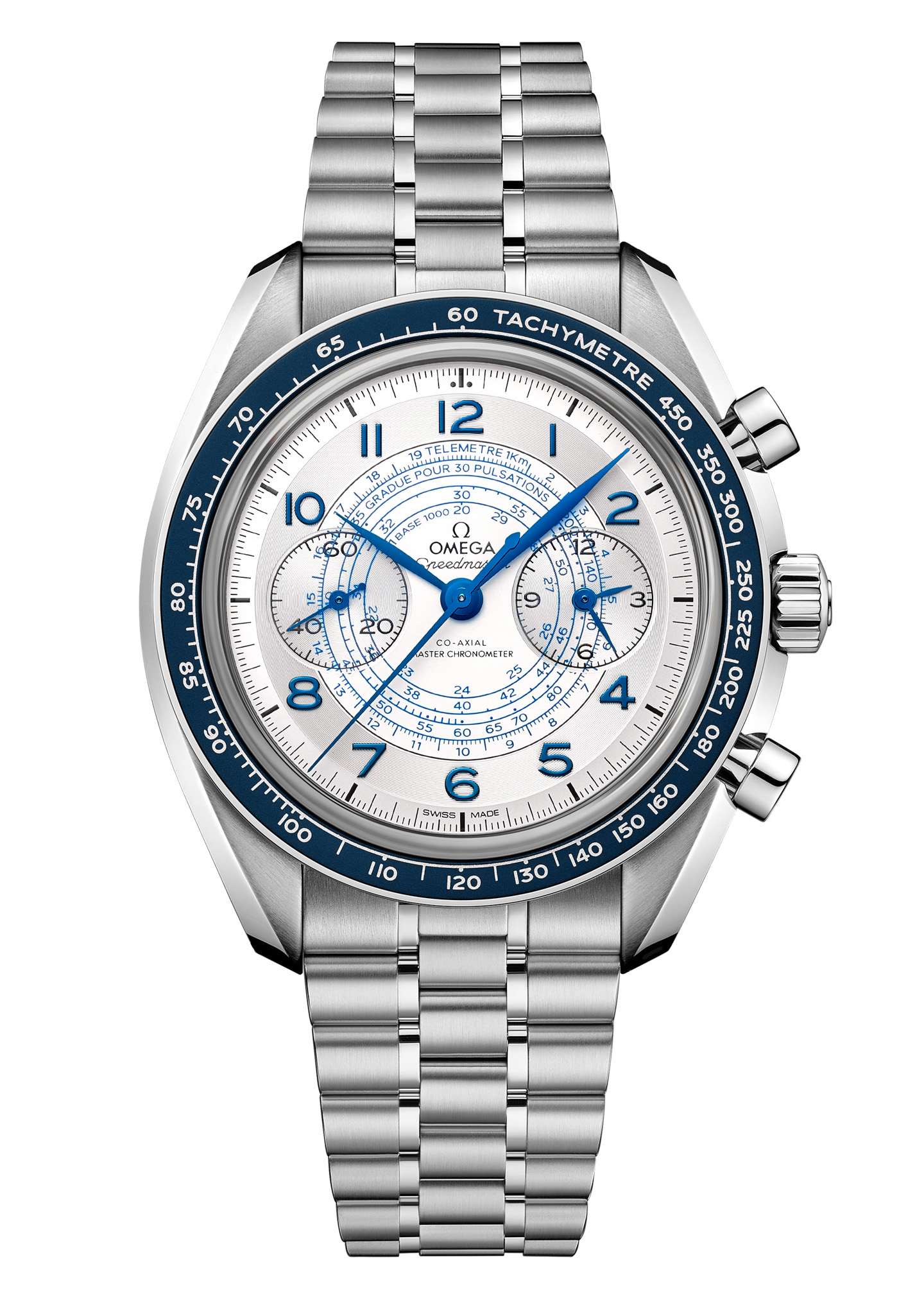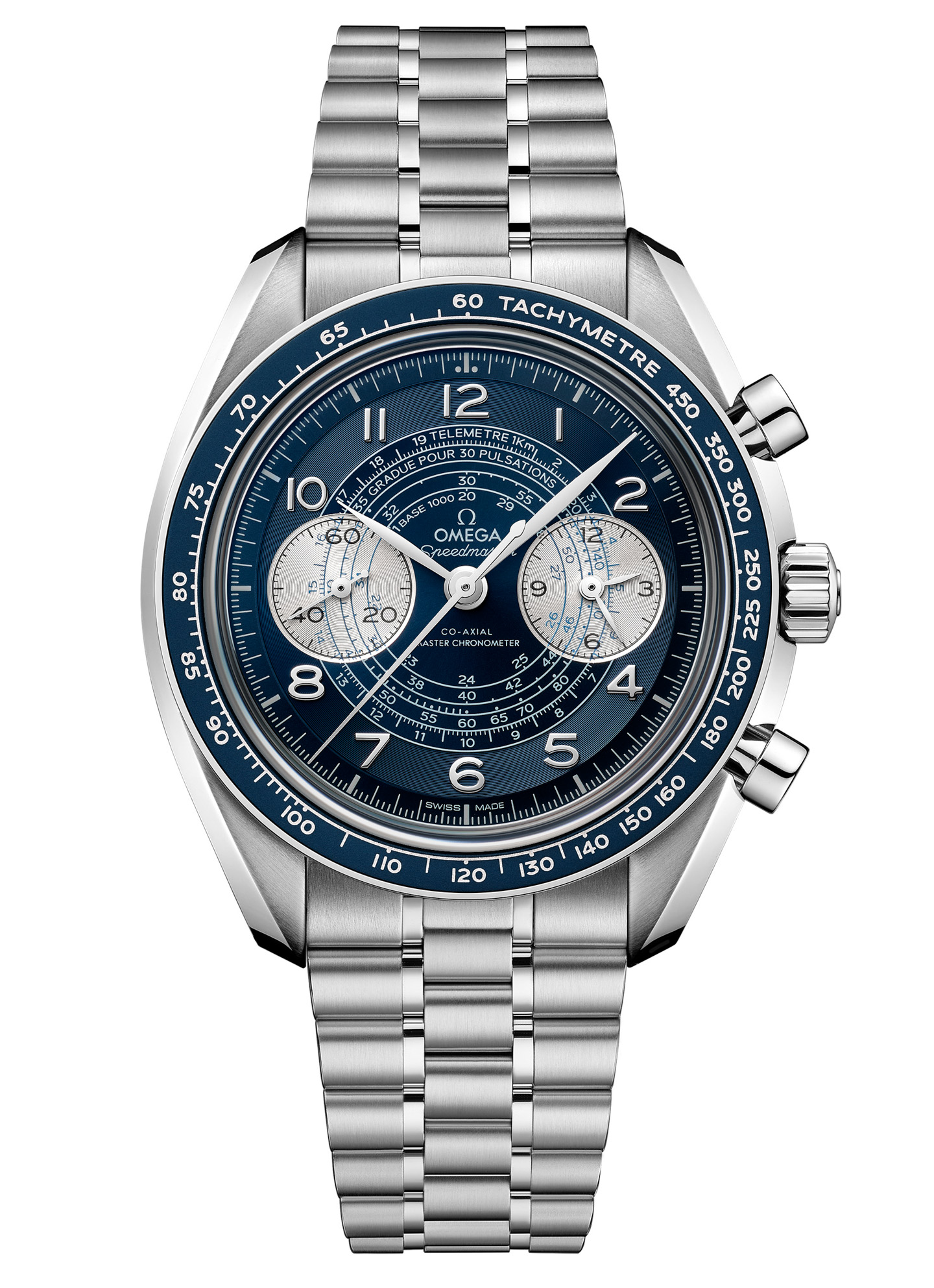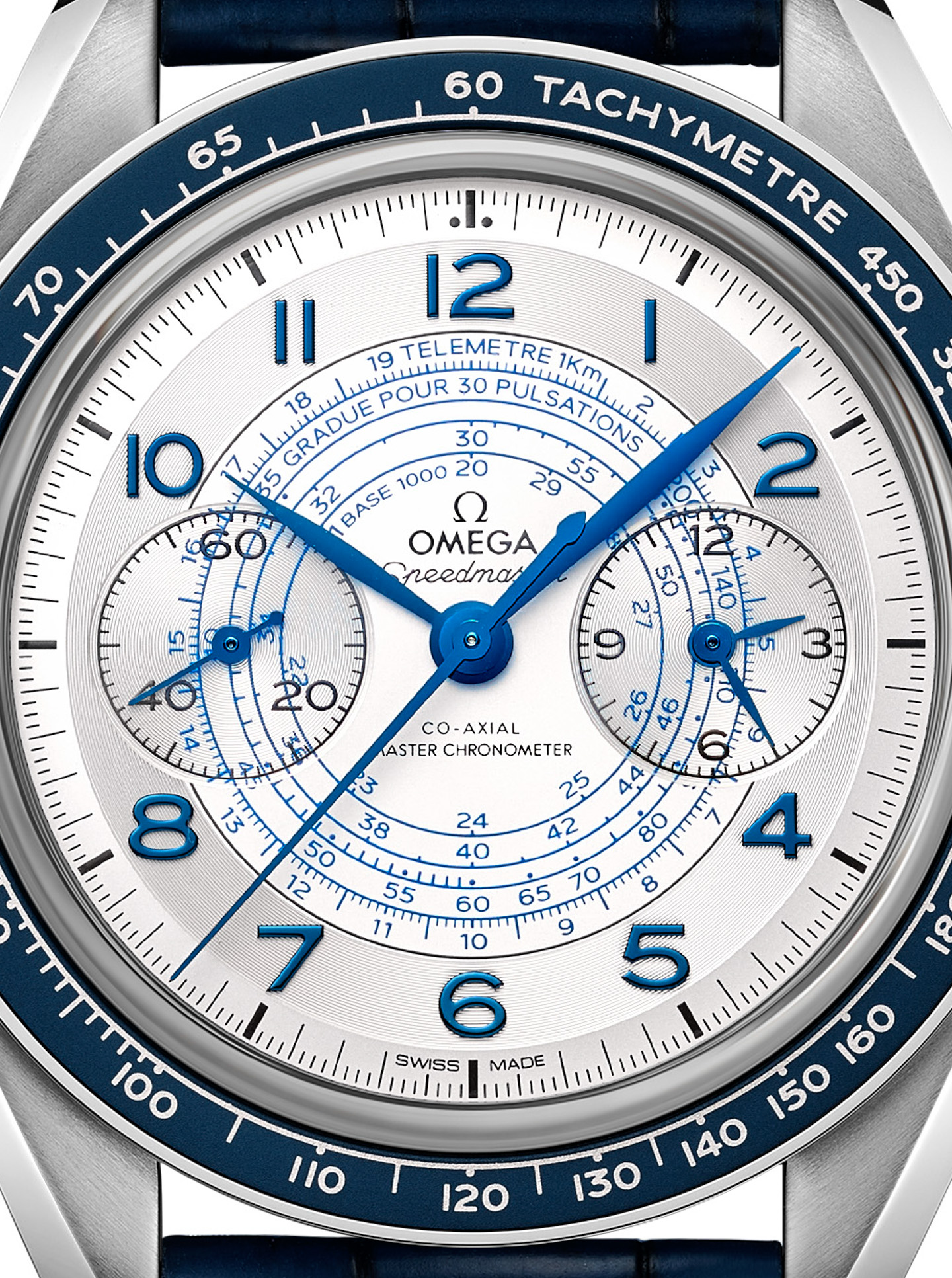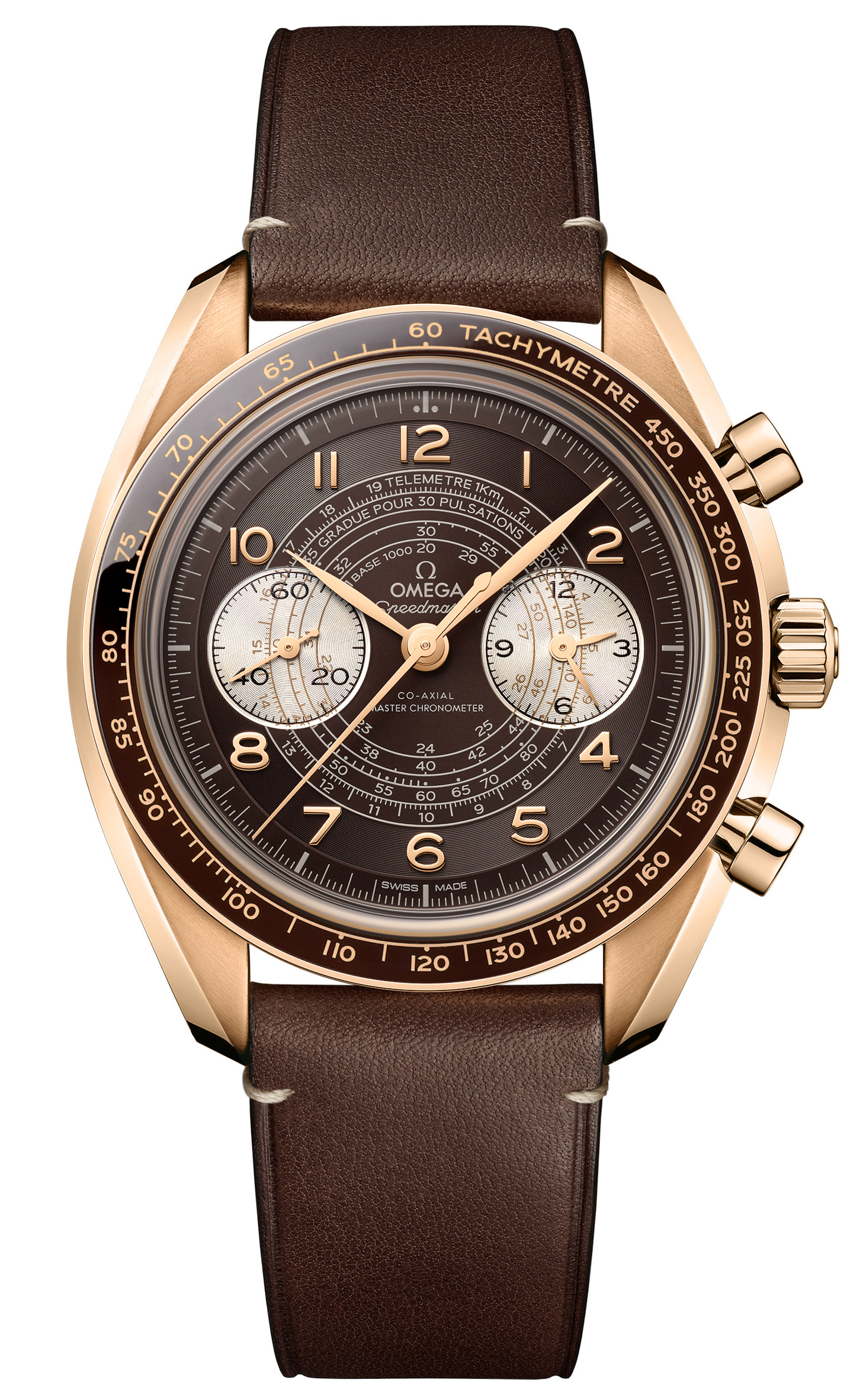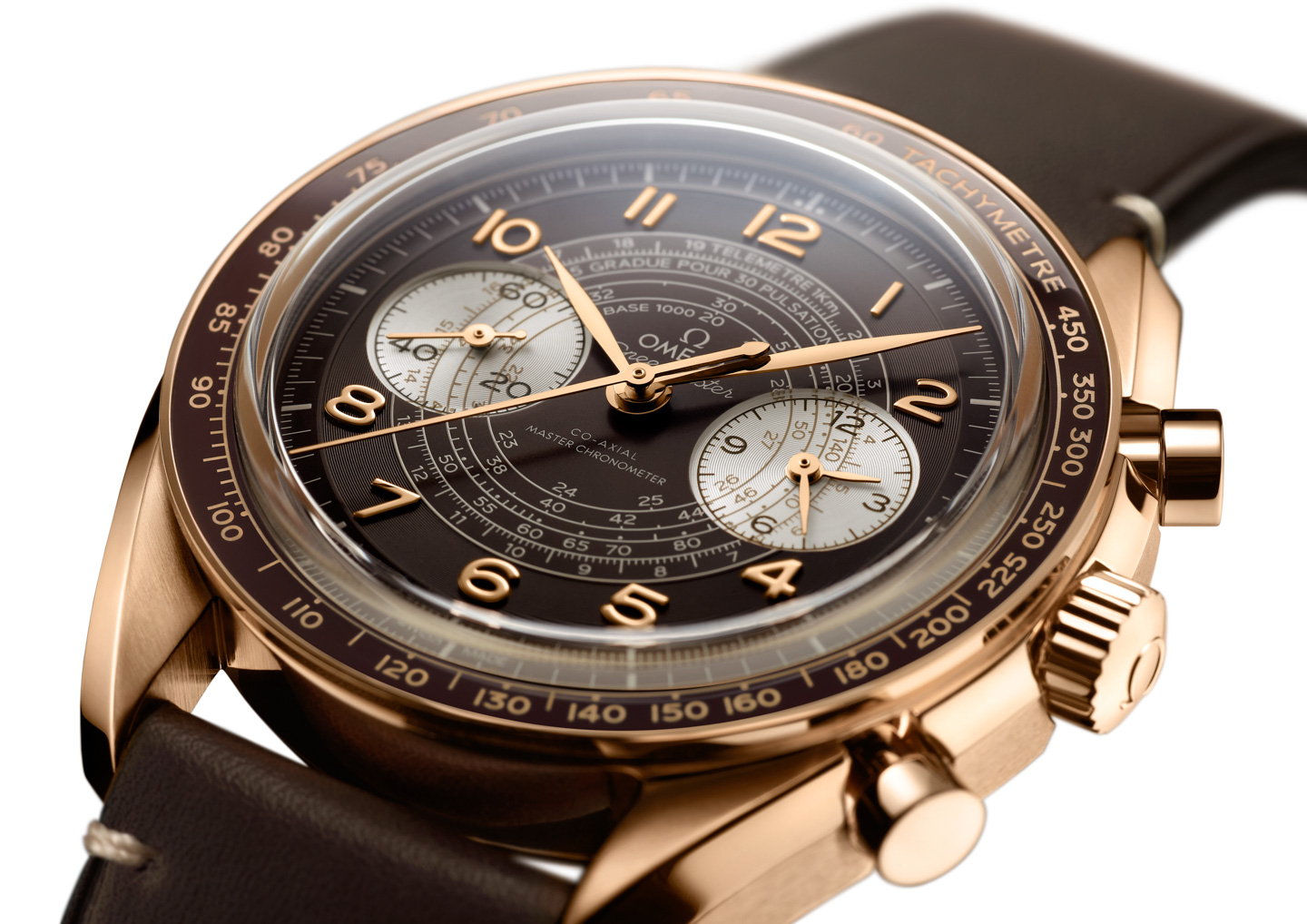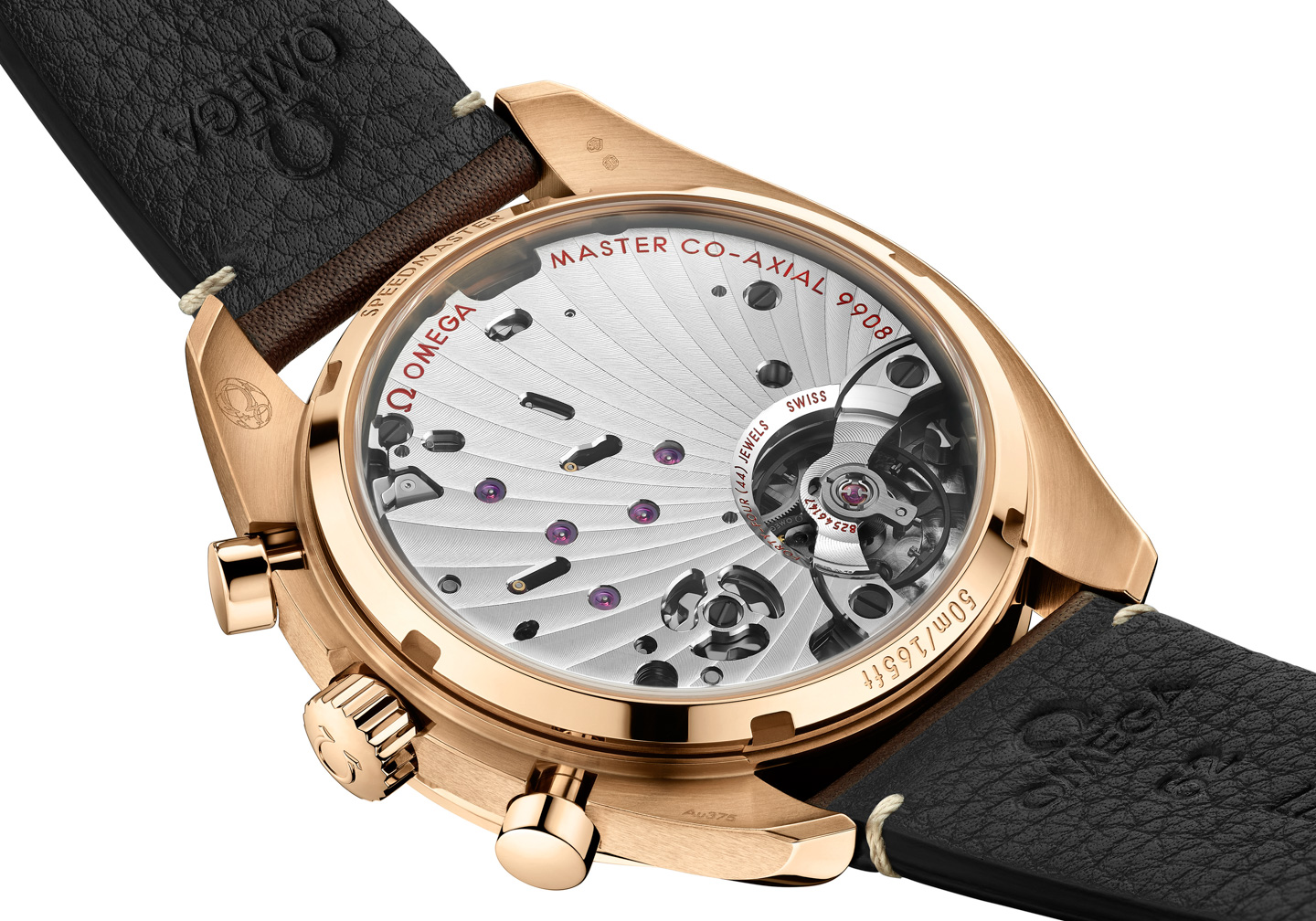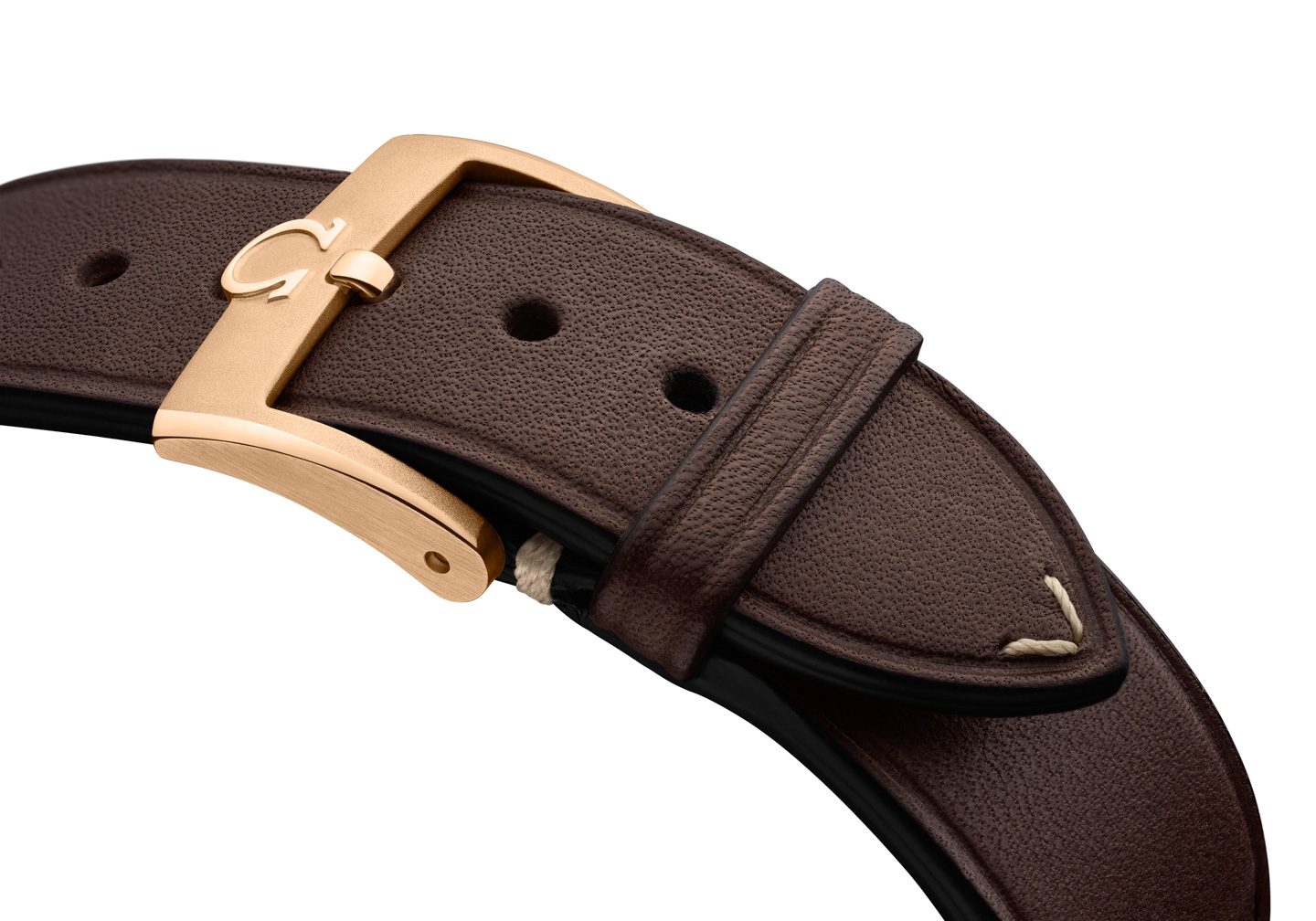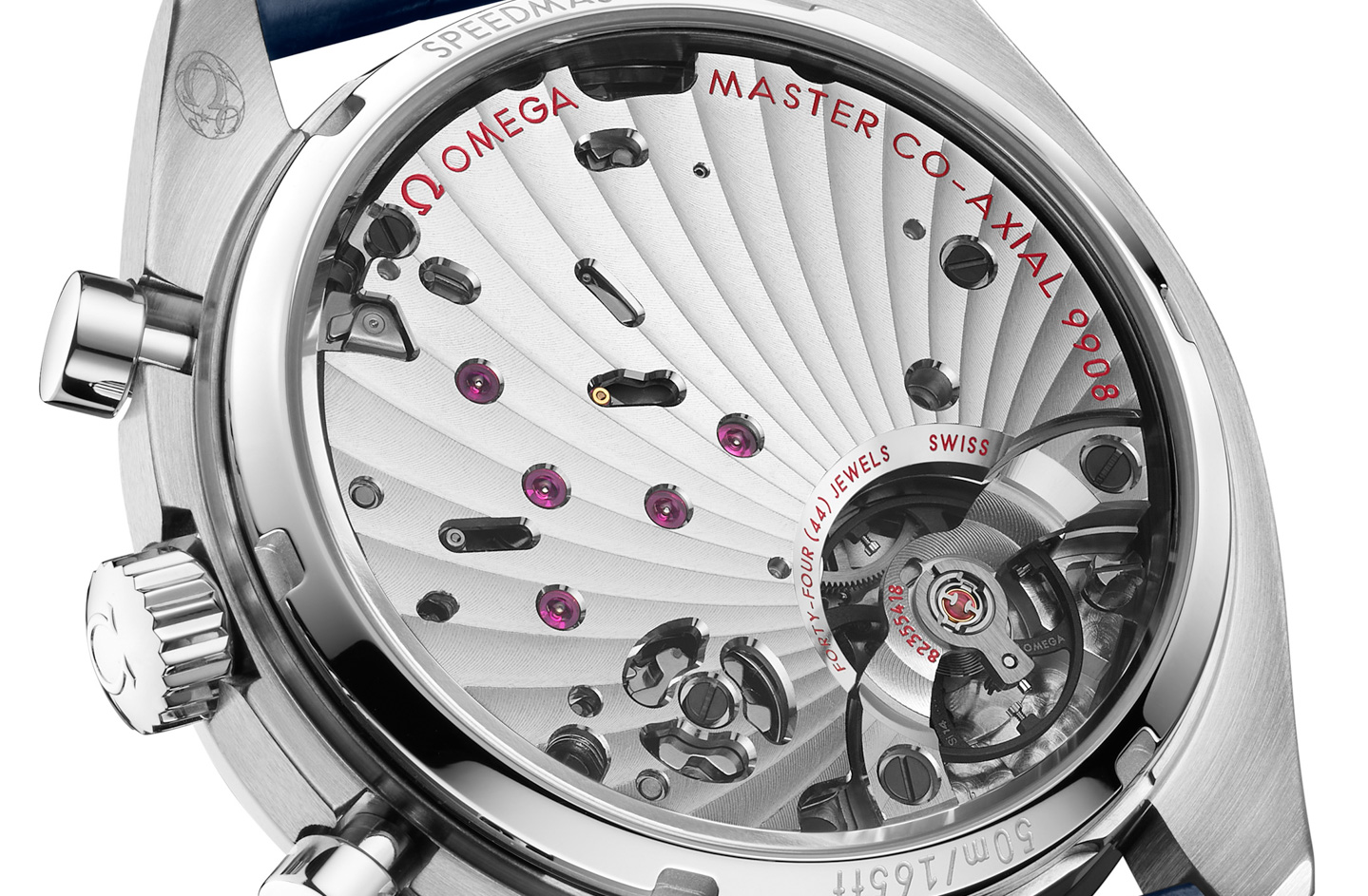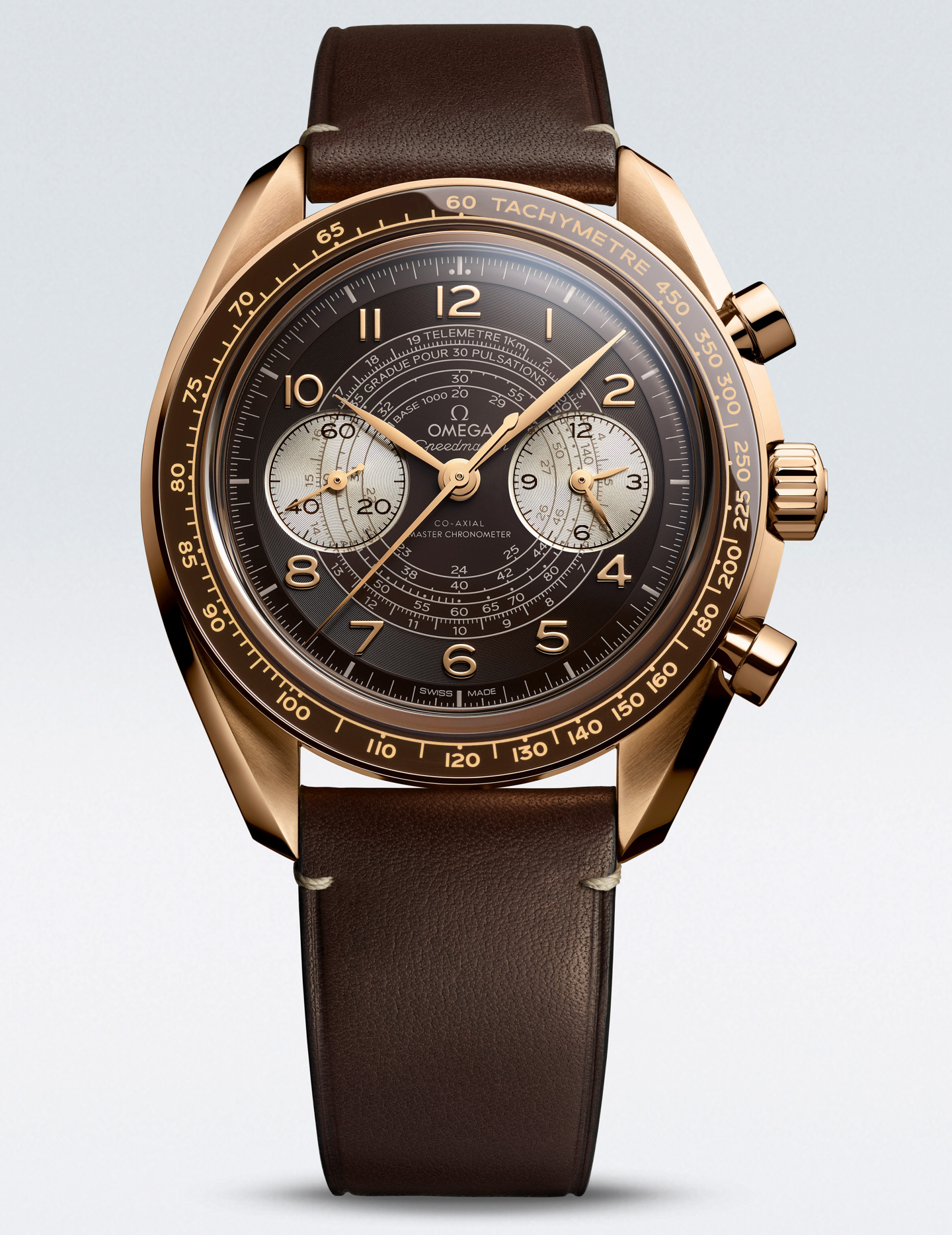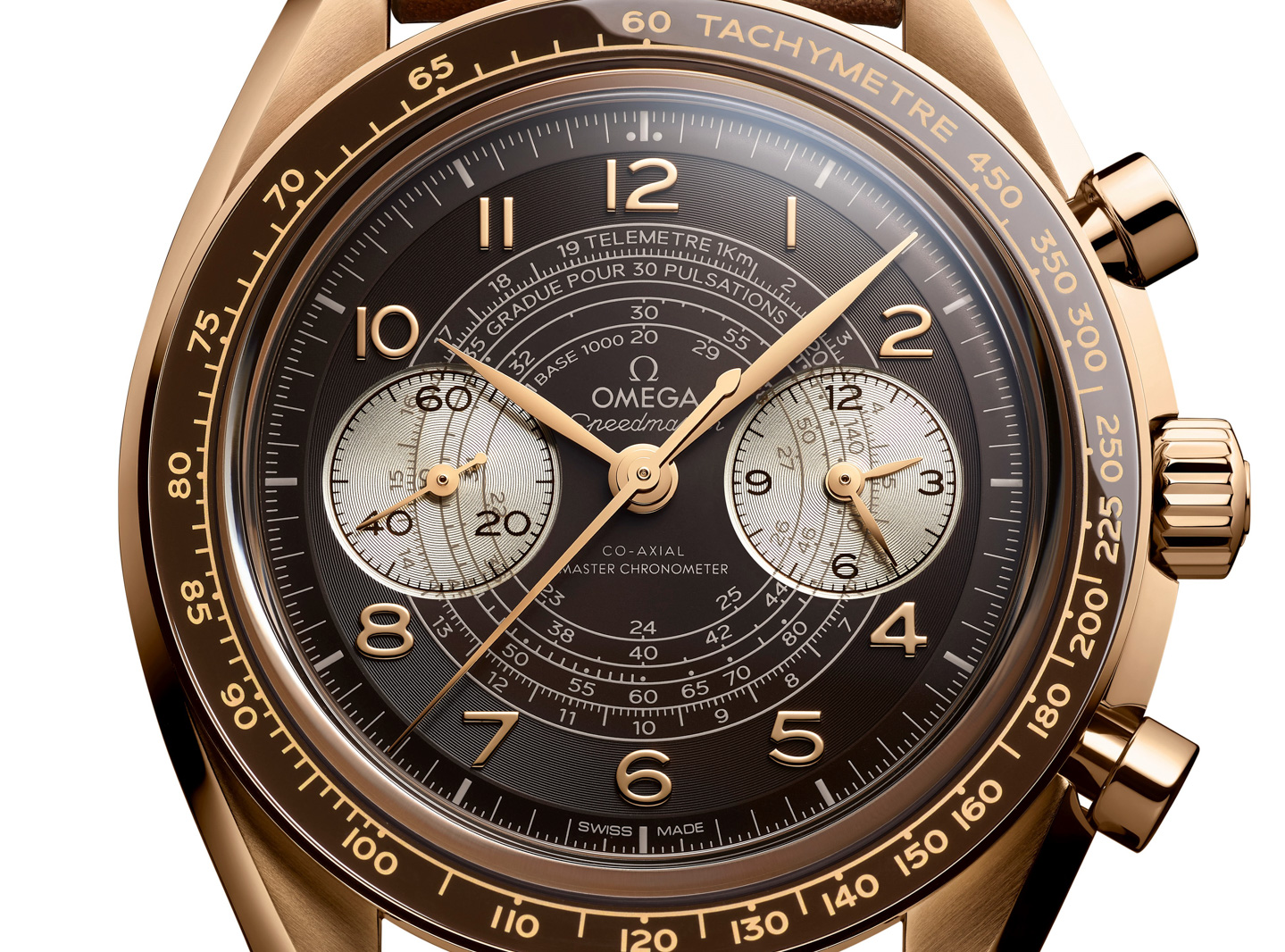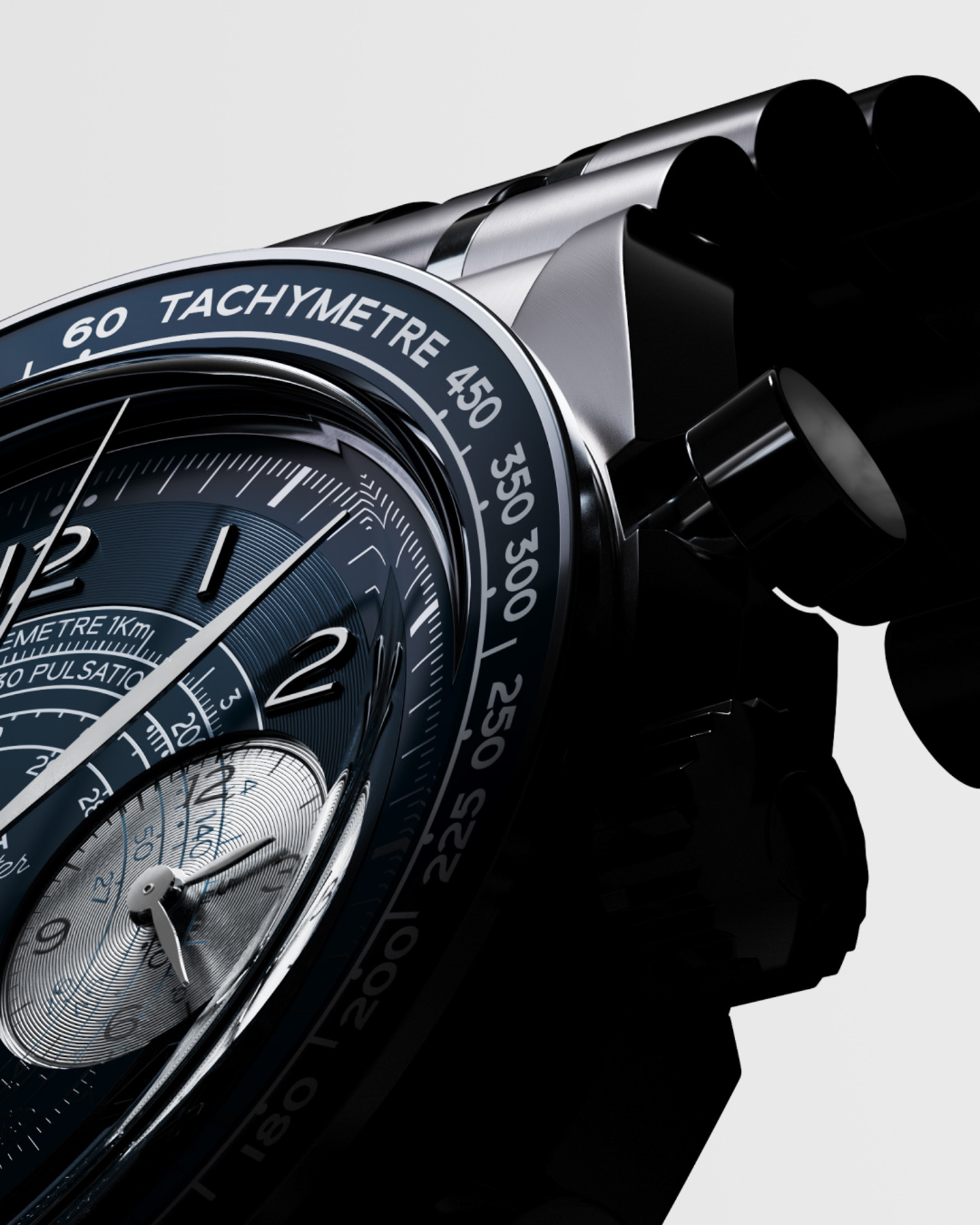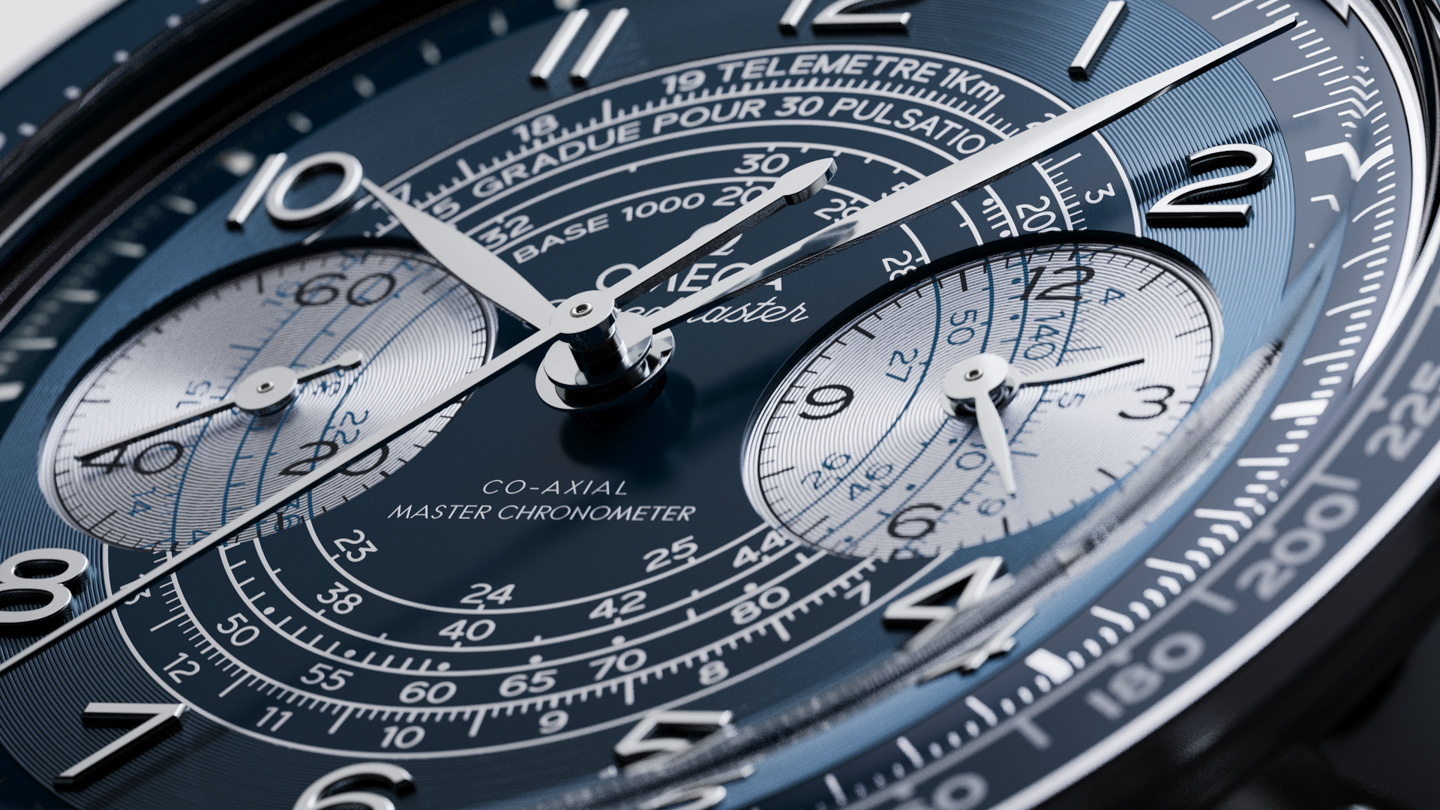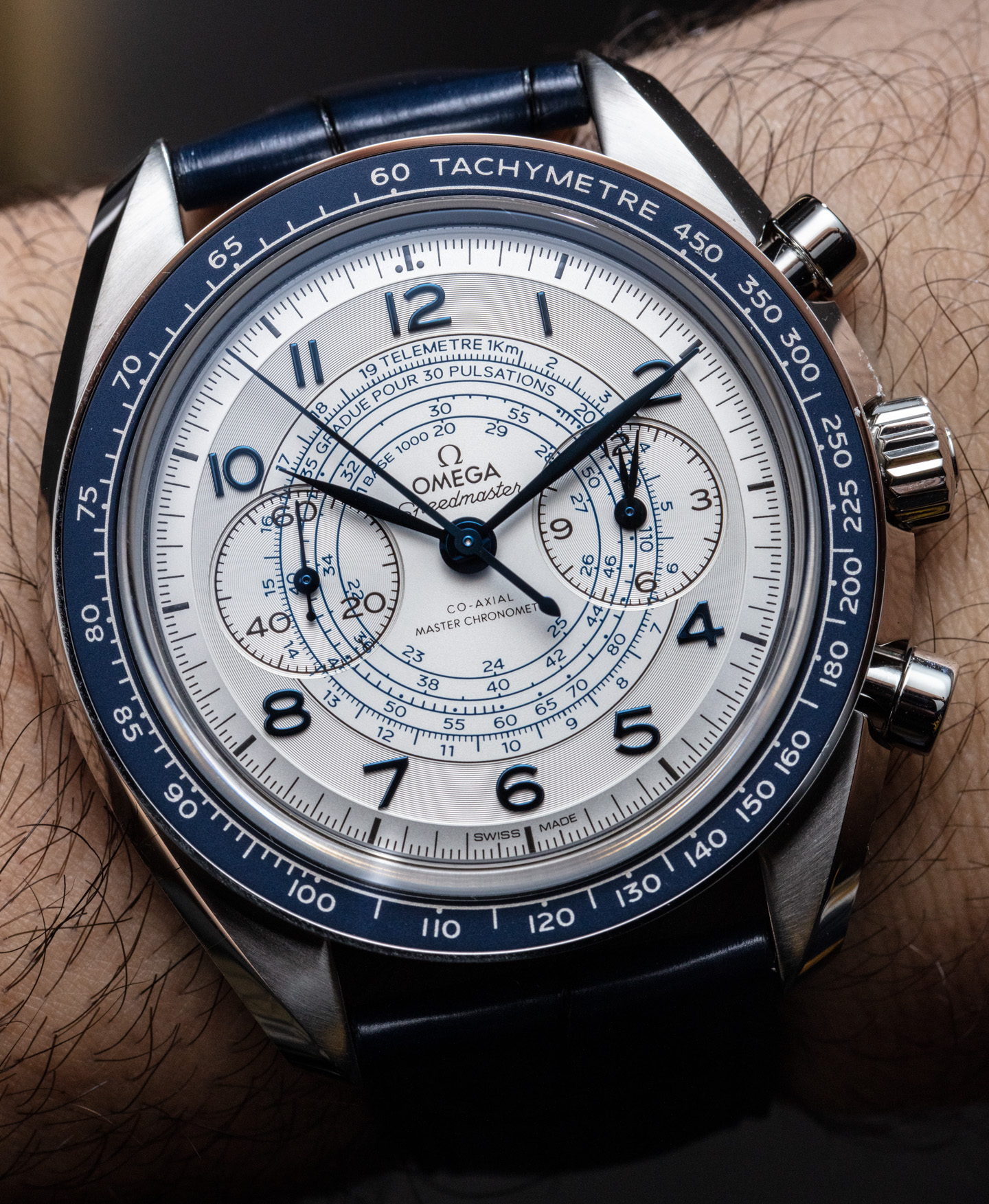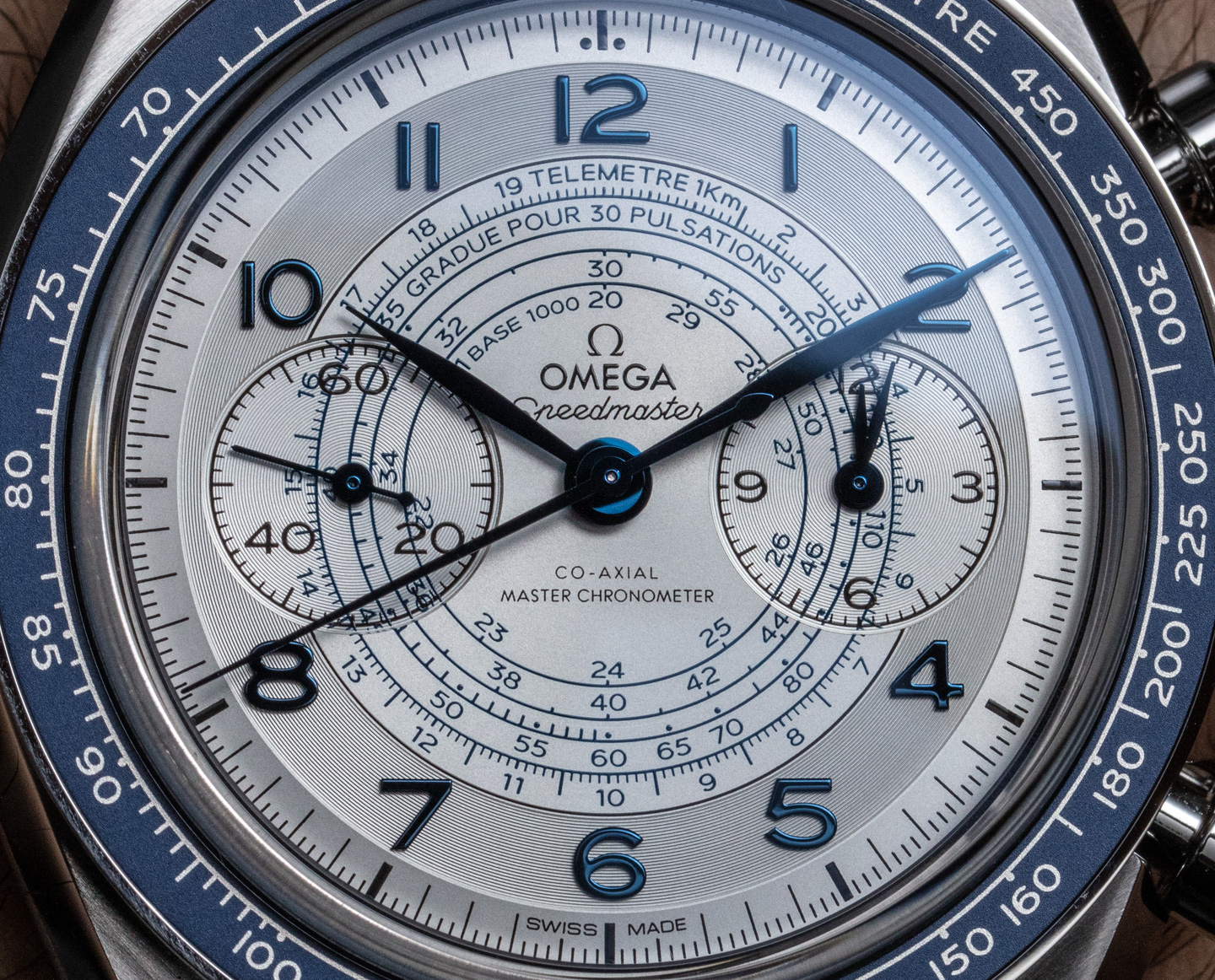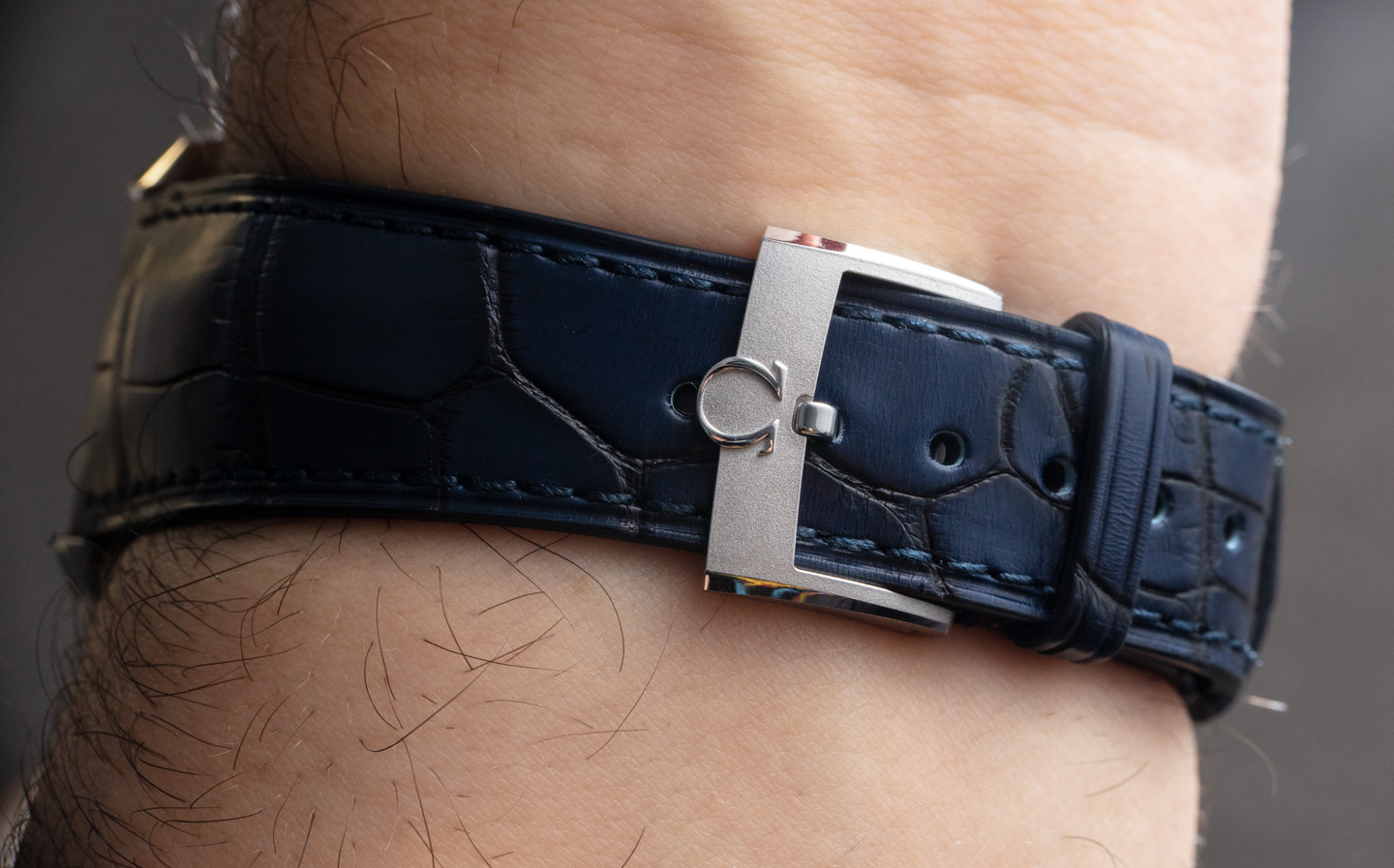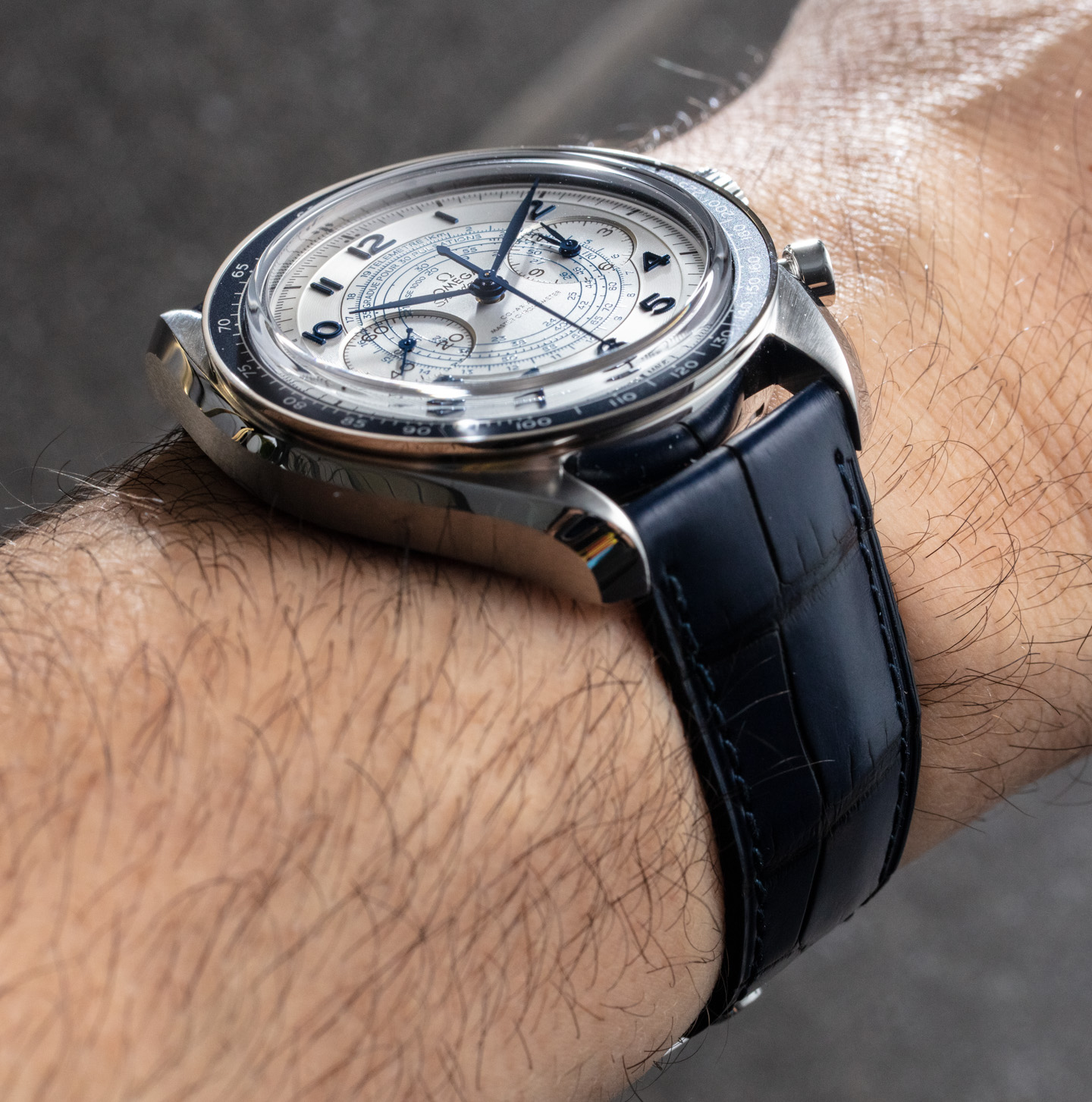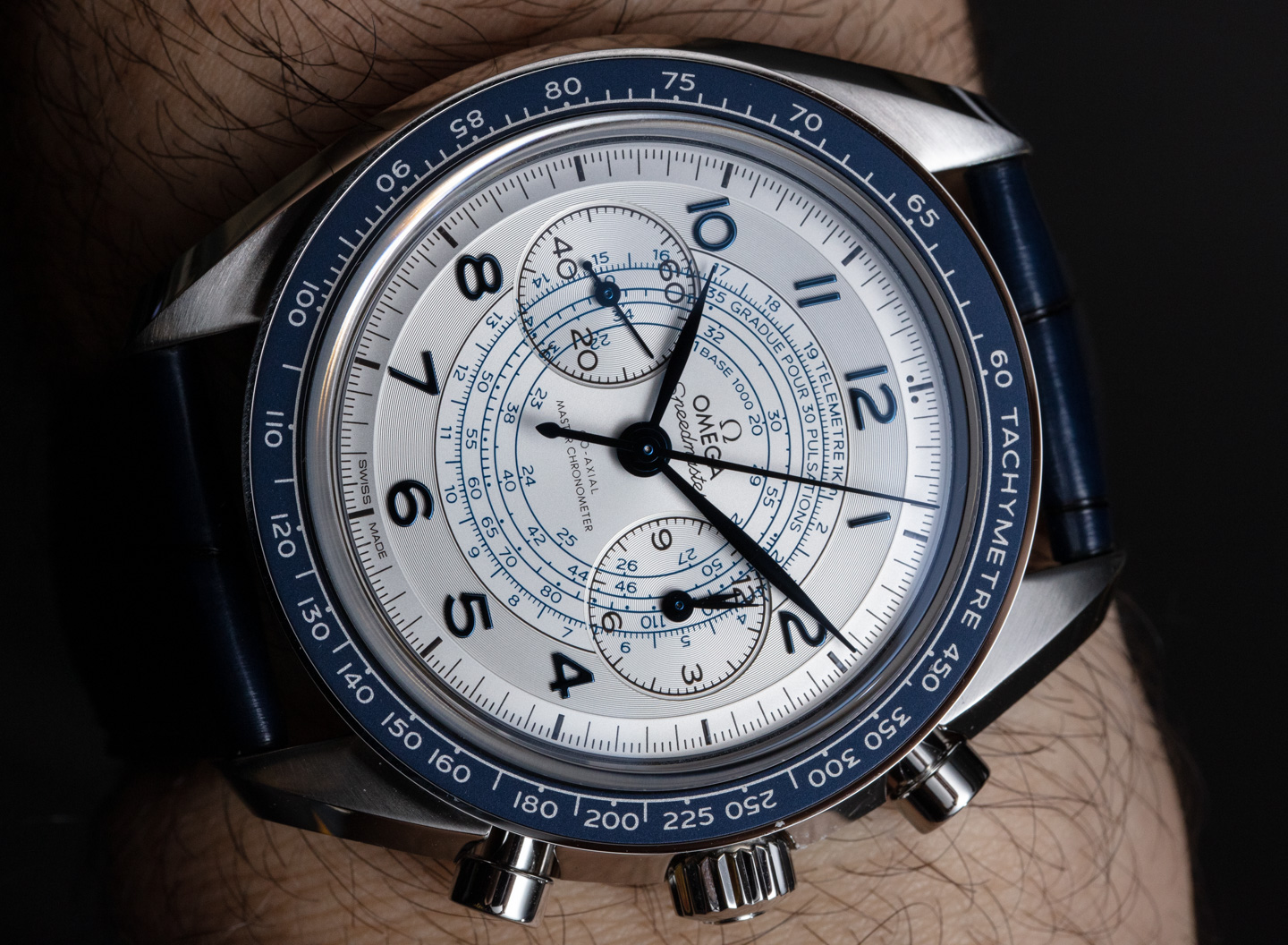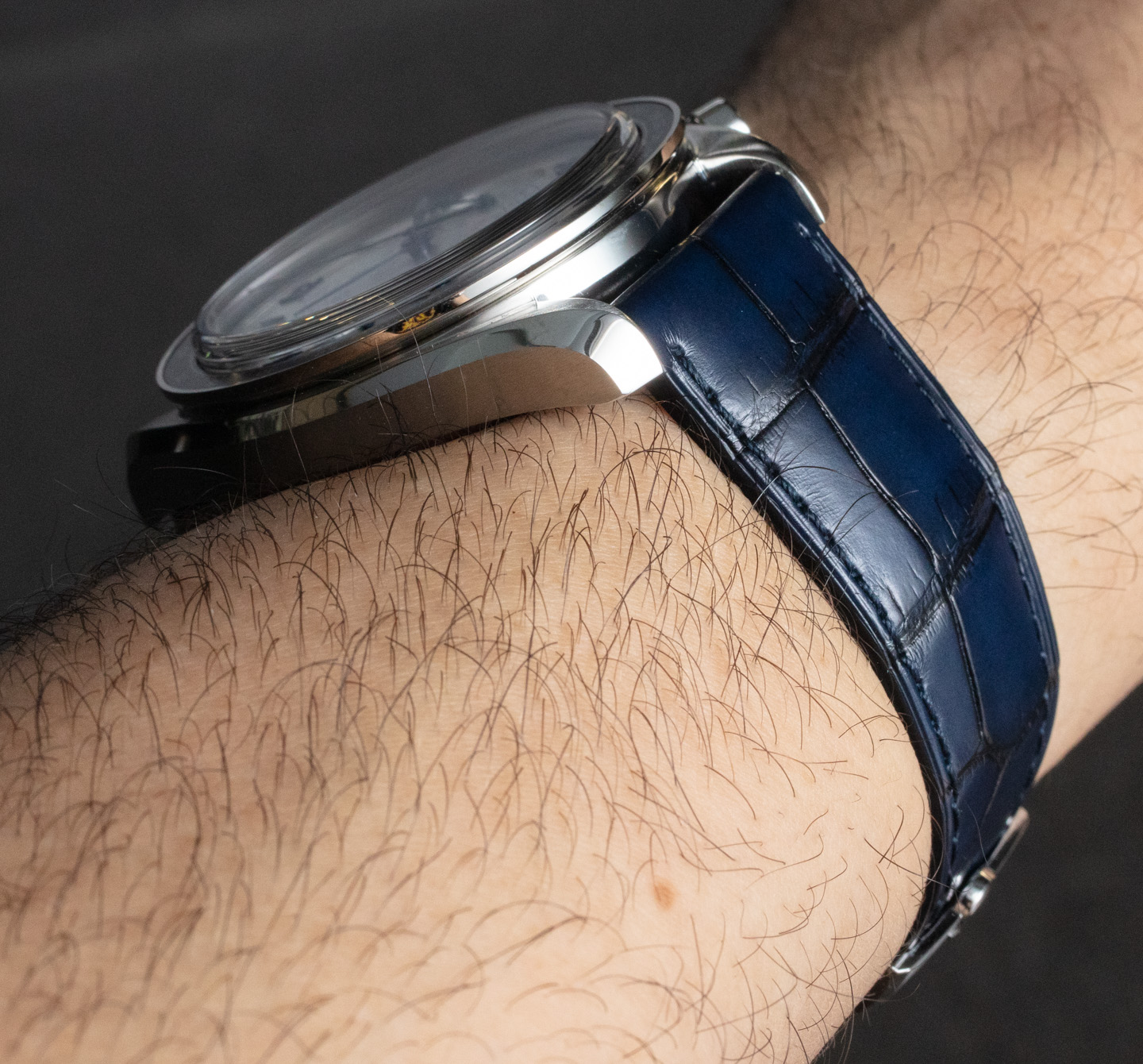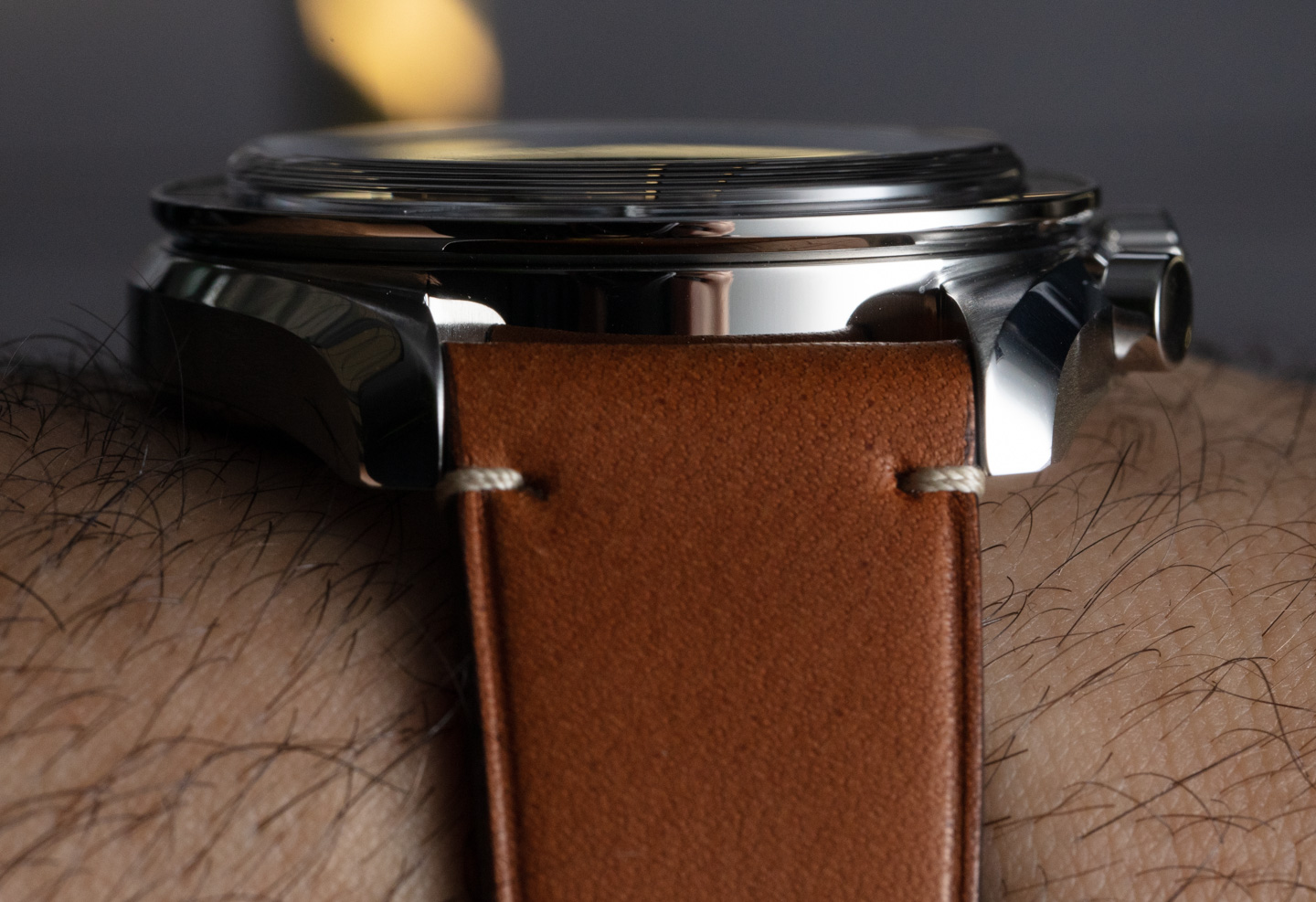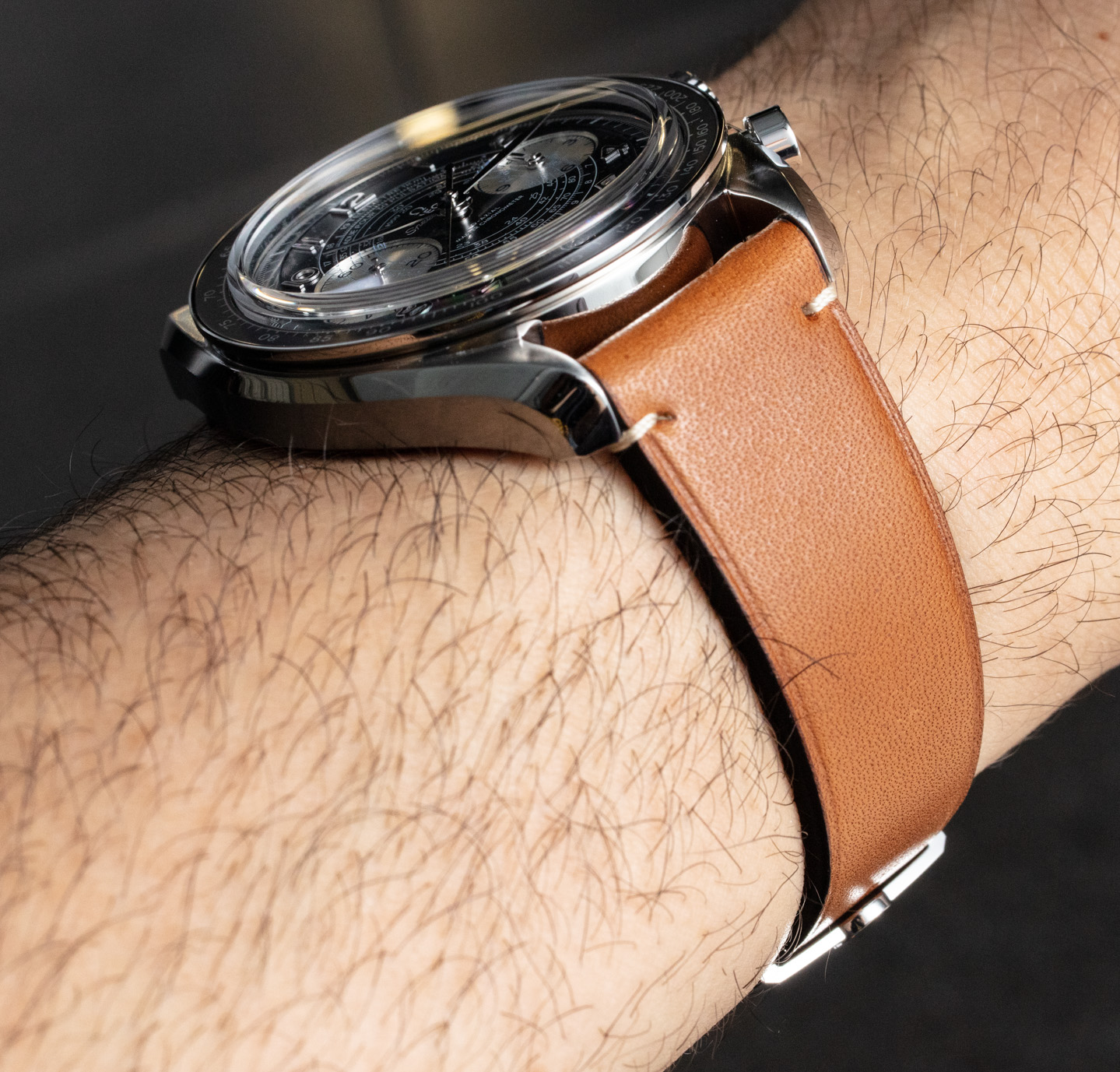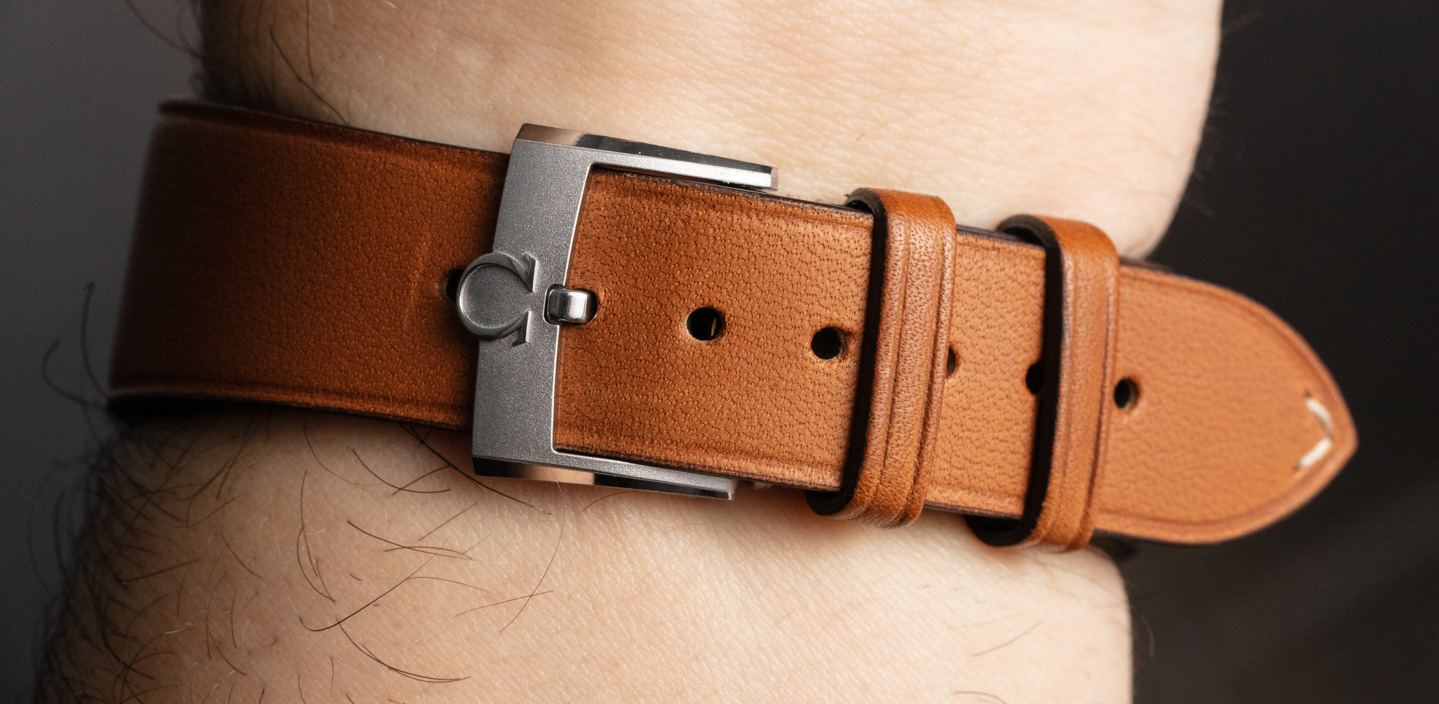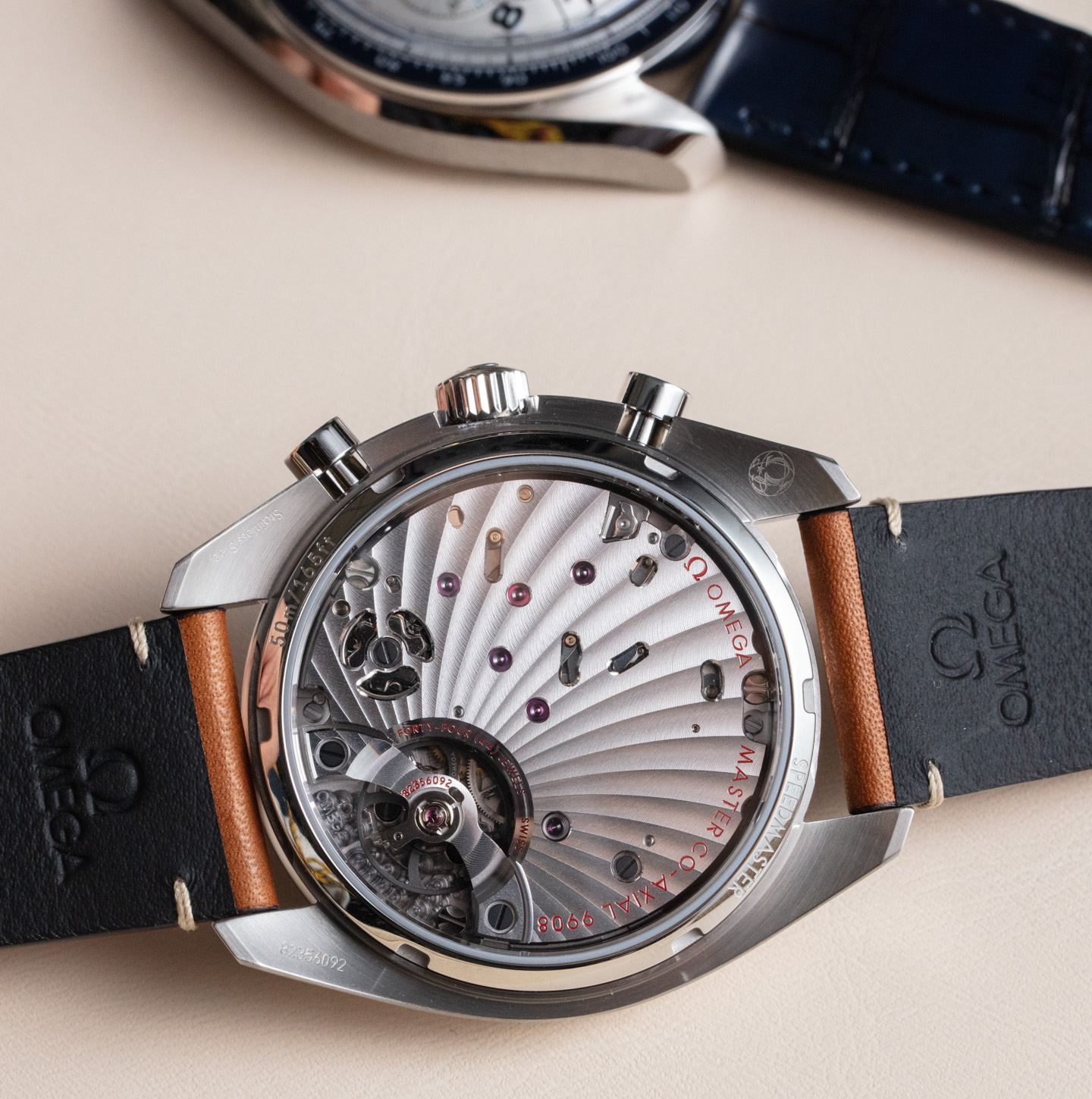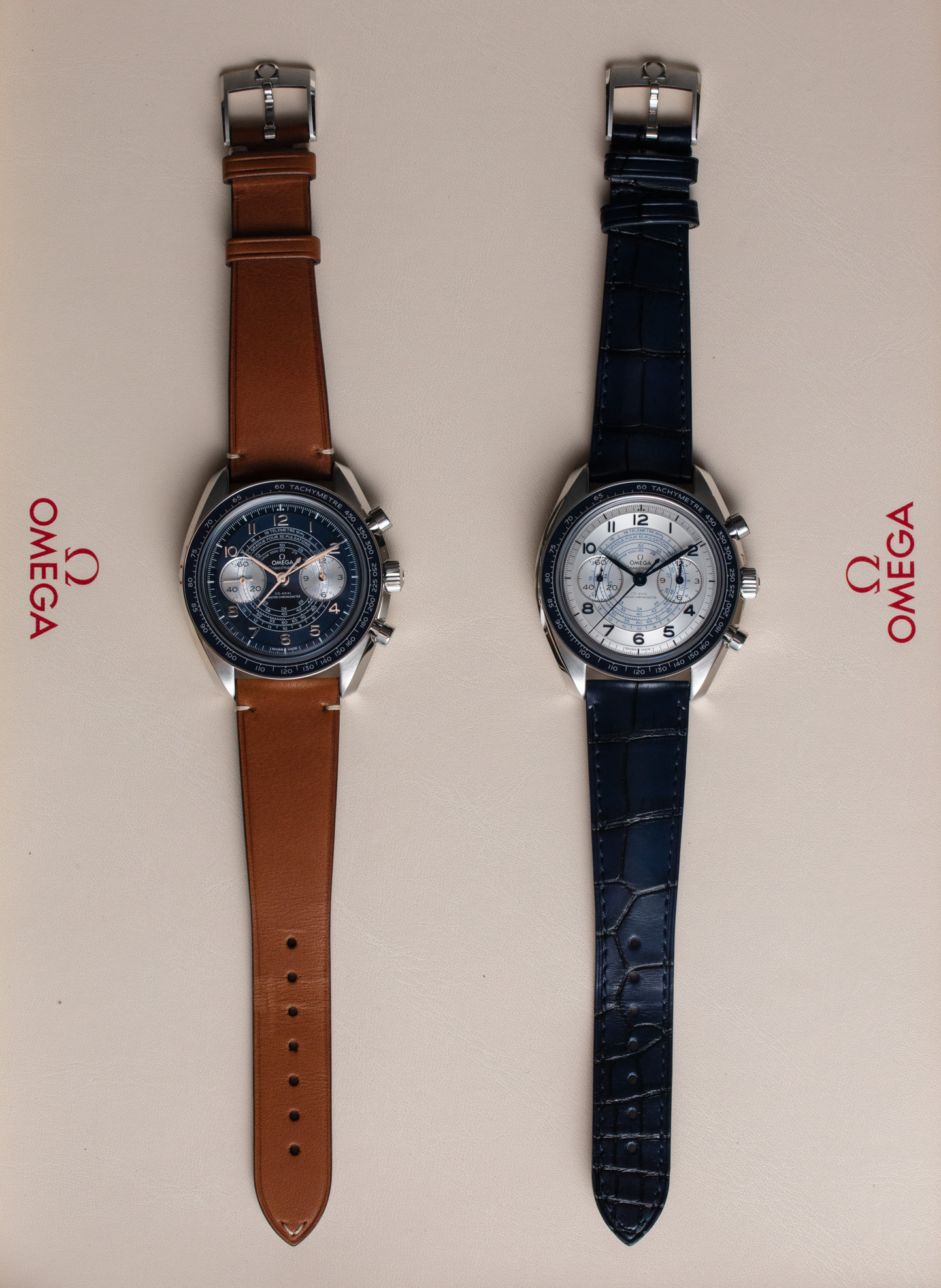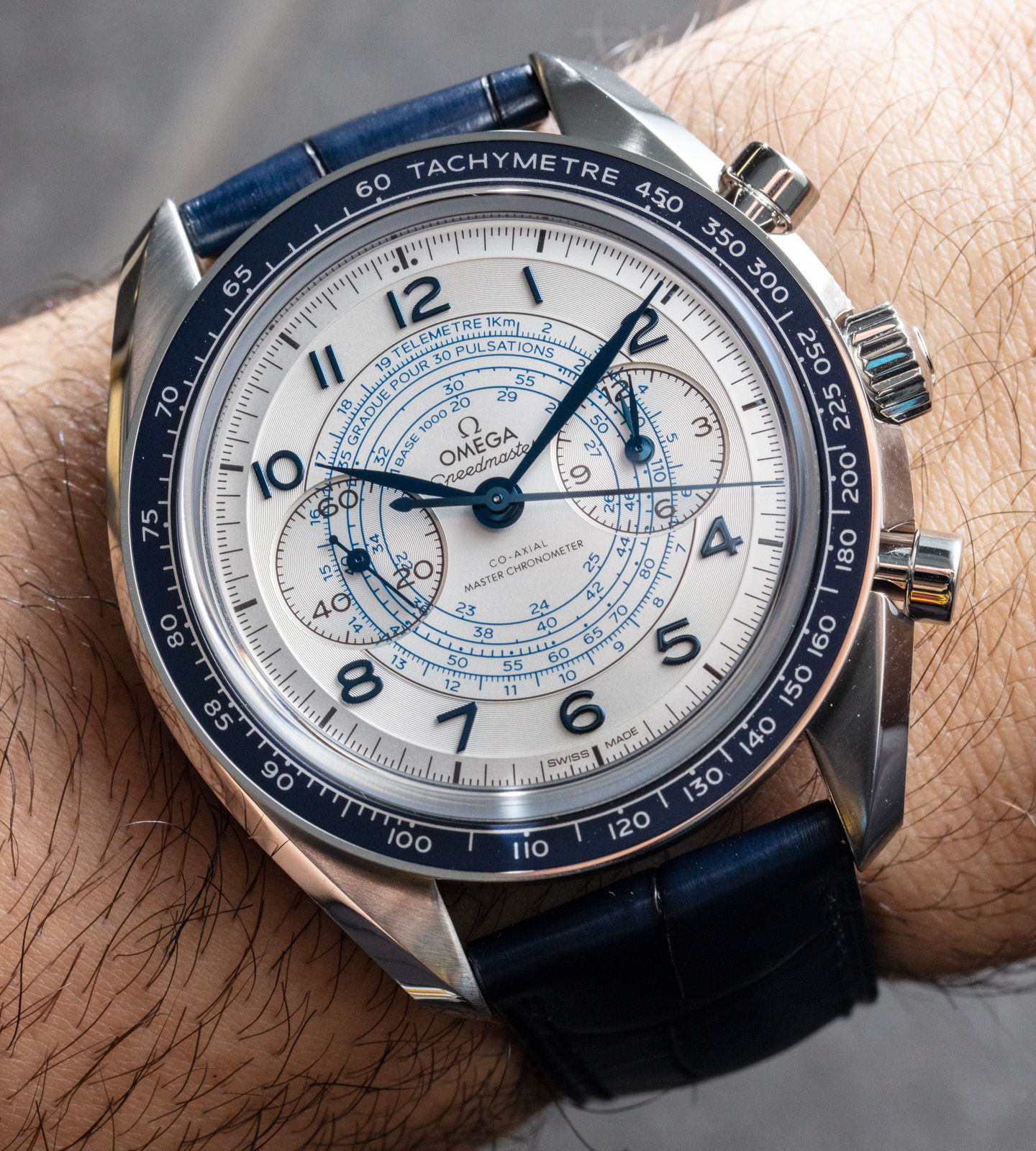
In September 2021 on aBlogtoWatch, Omega debuted a revival to a historic name with the Omega Speedmaster Co-Axial Master Chronometer Chronograph watches here. The “Chronoscope” name is over 100 years old now, as I understand it, and was an early term used to describe a wristwatch able to “show the time” (which is how “chronoscope” translates from Greek). The name, along with the sports chronograph dial, returns and is incorporated into a modern (albeit revised) Speedmaster-style case. The result is an interesting blend of the new and traditional while featuring a new manually wound version of Omega’s prestigious Co-Axial Master Chronometer chronograph movement.
While the Chronoscope case is certainly that of a Speedmaster, the size is different from other current Speedmaster models. The Speedmaster Chronoscope case is 43mm-wide — which is a bit narrower than the other modern Speedmaster watches that are just over 44mm-wide. The case is also thinner because it has a manually wound (versus automatic) movement. Omega hasn’t shared the actual thickness rating of the case, and I didn’t have a measuring device with me when handling the watch, but I can easily say that the Omega Chronoscope is easily visually thinner than most other current-generation Speedmaster cases.
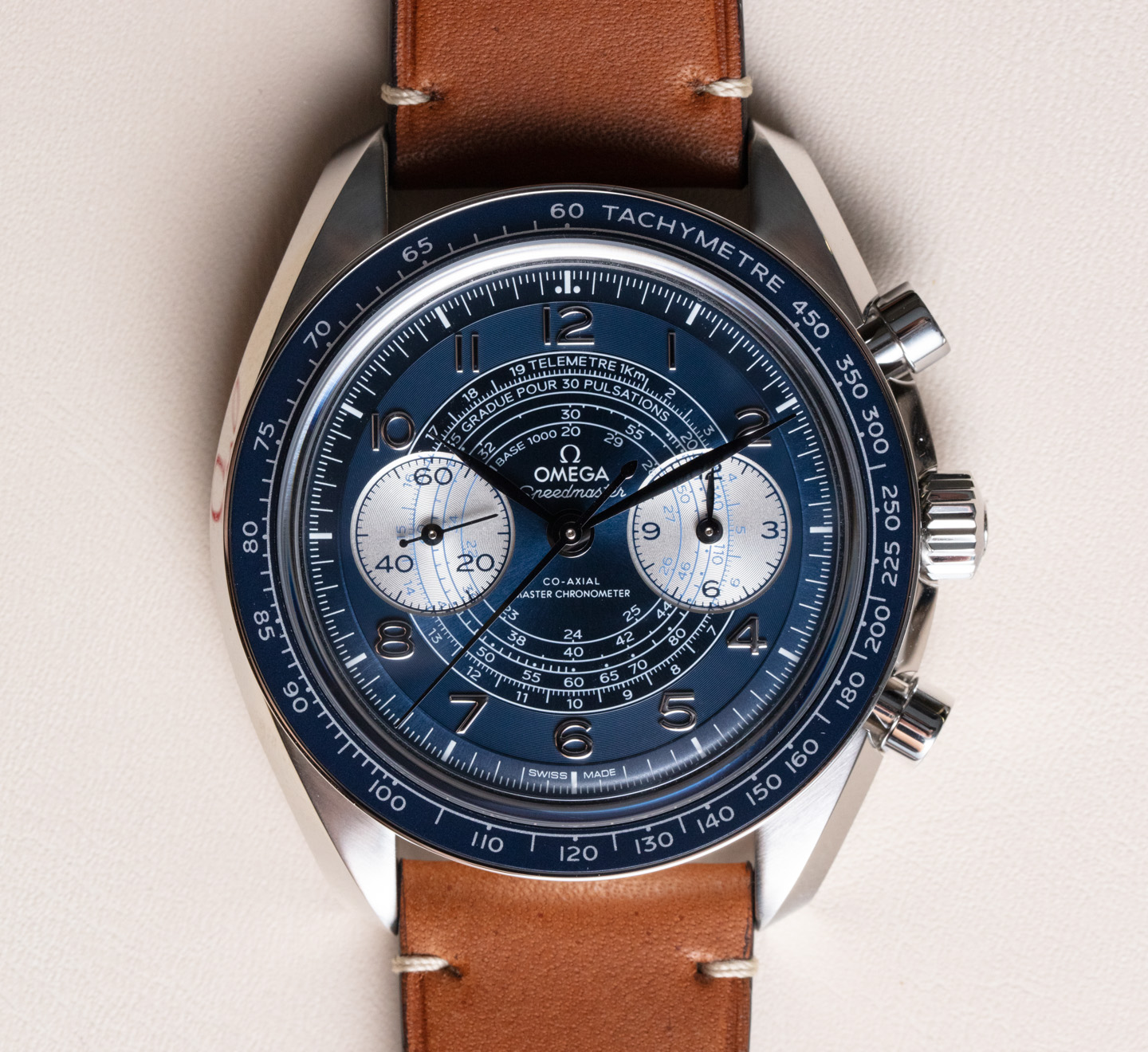
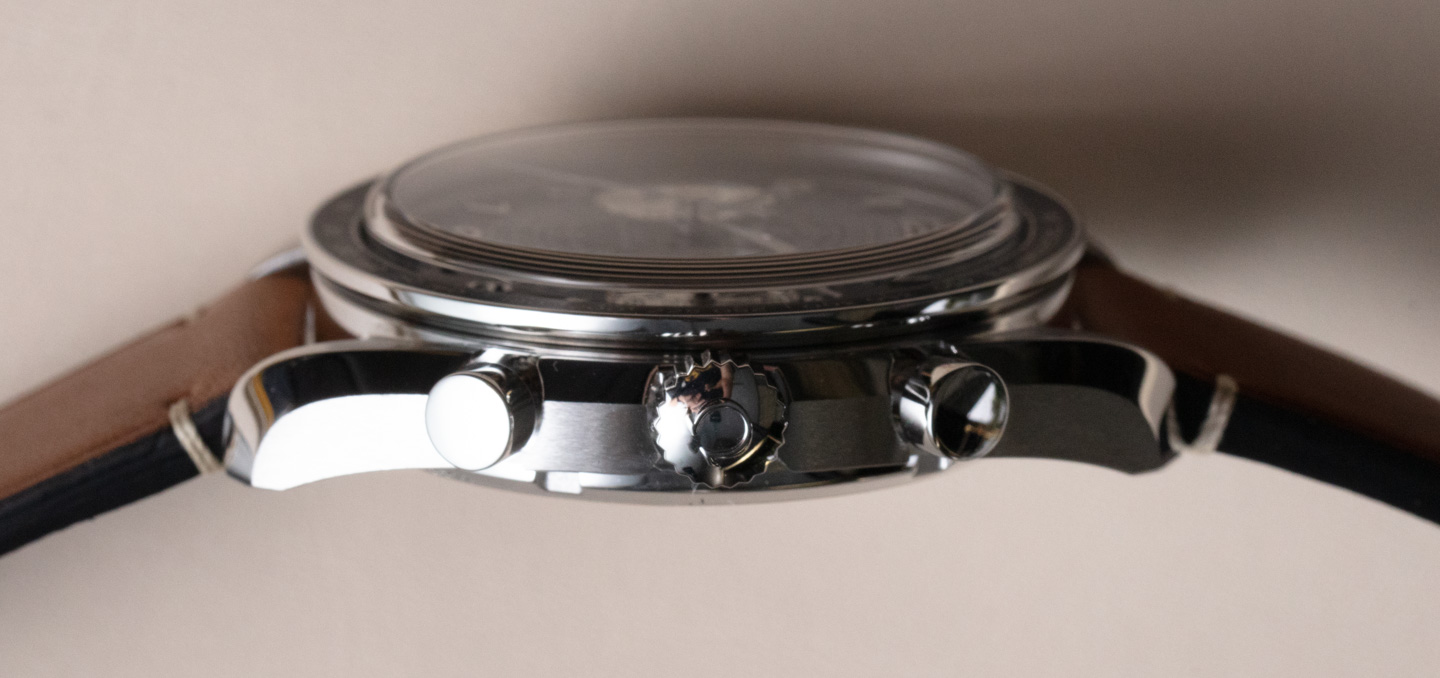
Most versions of the Chronoscope watch are in polished and brushed steel (also available on a matching Speedmaster-style bracelet), but Omega also offers a more high-luxury version in an alloy it calls “bronze gold.” The alloy is more than 40% gold and is designed to offer the warm colors of bronze with the color and oxidation stability of gold. The bronze-gold version of the Speedmaster Chronoscope is also fitted with a brown-toned ceramic bezel insert, as opposed to the anodized aluminum bezel insert used on the steel models. Why bronze gold and not just traditional 18k-gold? That is a good question. The short answer is price. A bronze/gold alloy allows the watch to be priced lower than an entirely gold timepiece, which results in a retail price of $14,000 USD for the reference 329.92.43.51.10.001 bronze-gold version of the new Speedmaster Chronoscope.
I want to spend more time discussing the dial design of this watch, but let’s first talk about the movement. Inside the Speedmaster Chronoscope is the Co-Axial Master Chronometer Omega caliber 9908 manually wound chronograph movement. Put simply, this is a minimalized version of Omega’s similar automatic chronograph movement with the automatic winding system removed to save space and give the watch a more traditional feel. Given the popularity of the manually wound Speedmaster Professional Moonwatch, it is clear there is a market for this. That said, I really would have liked to see Omega figure out a way of incorporating a power reserve indicator on the movement side of the watch in order to maximize the utility of this sport-style timepiece.
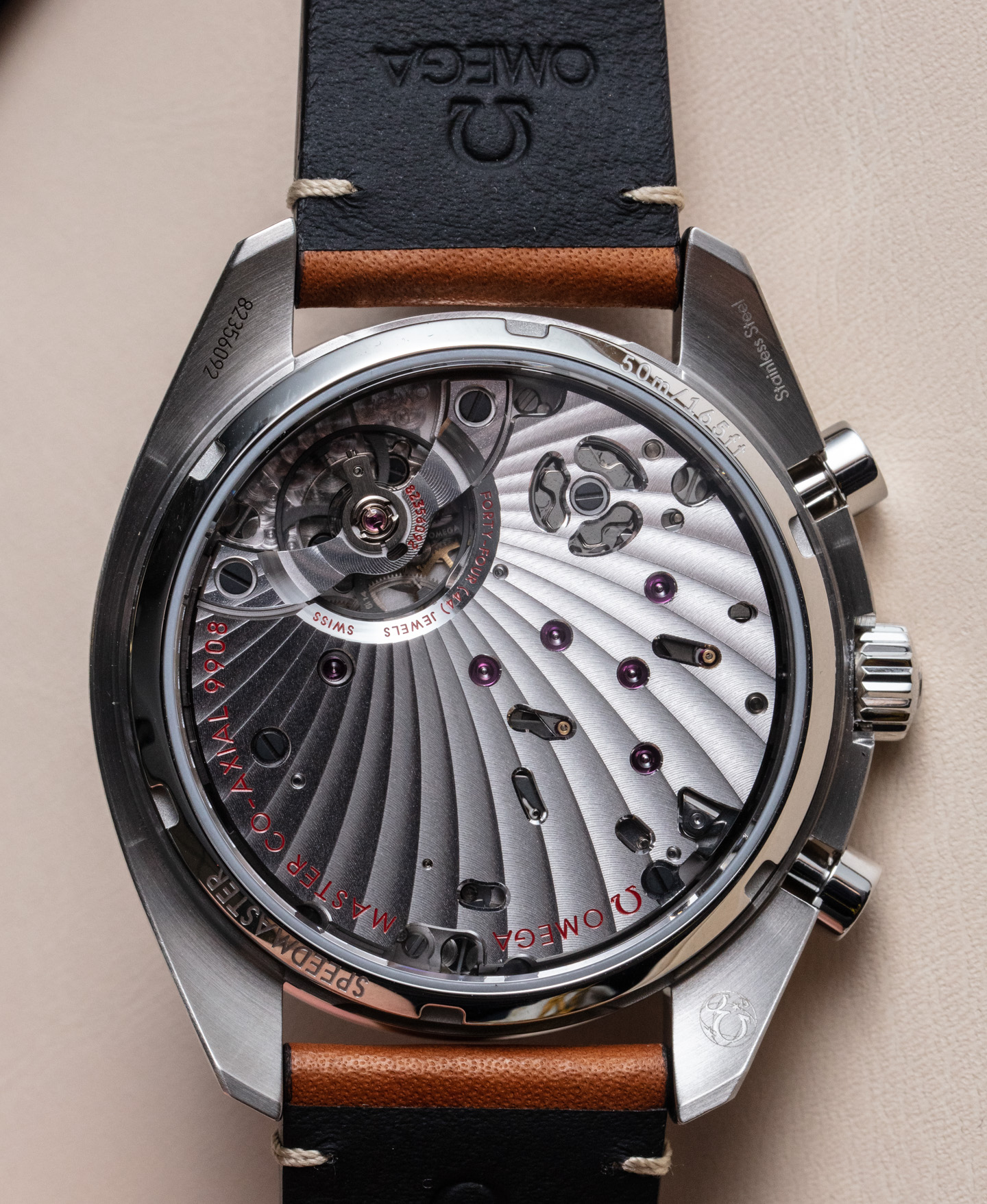
The caliber 9908 movement is a Co-Axial Master Chronometer which implies it is METAS-certified in-house at Omega. Among other performance assurances, the METAS certification also conveys a high degree of magnetic resistance for the watch. This is done by Omega using a movement that is mostly a-magnetic and can thus still feature a full display caseback with a view of the attractively decorated movement surfaces. The 9908 movement operates at 4Hz I believe (Omega does not publish the actual frequency anymore but I believe they no longer go with 3.5Hz which was the rate of the “classic” Co-Axial escapement based movements) with a power reserve of 60 hours, a Co-Axial escapement system, silicon balance spring, and a full 12-hour chronograph, which features a single subdial (on the right of the dial) that includes both a hand for measuring the chronograph minutes, as well as hours). As Master Chronometer, the 9908 is also a very accurate and reliable mechanical timekeeping mechanism.
Omega went back to its sports watches from the 1940s when designing the dial of today’s Chronoscope watches. Omega and other brands at the time were really focused on maximizing the utility of a chronograph. Thus, many watches at the time featured three utility scales on the dial, many of which are still used for decorative purposes on chronograph timepieces today. The Chronoscope name and this watch dial design concept predated the Speedmaster name by at least a decade. I mention that because the Speedmaster’s distinctive look comes, in part, thanks to the bezel’s tachymeter scale designed to measure speed. Tachymeter scales have been on watch dials for a long time, and you can see it used again here on the bezel of the Chronoscope watch.
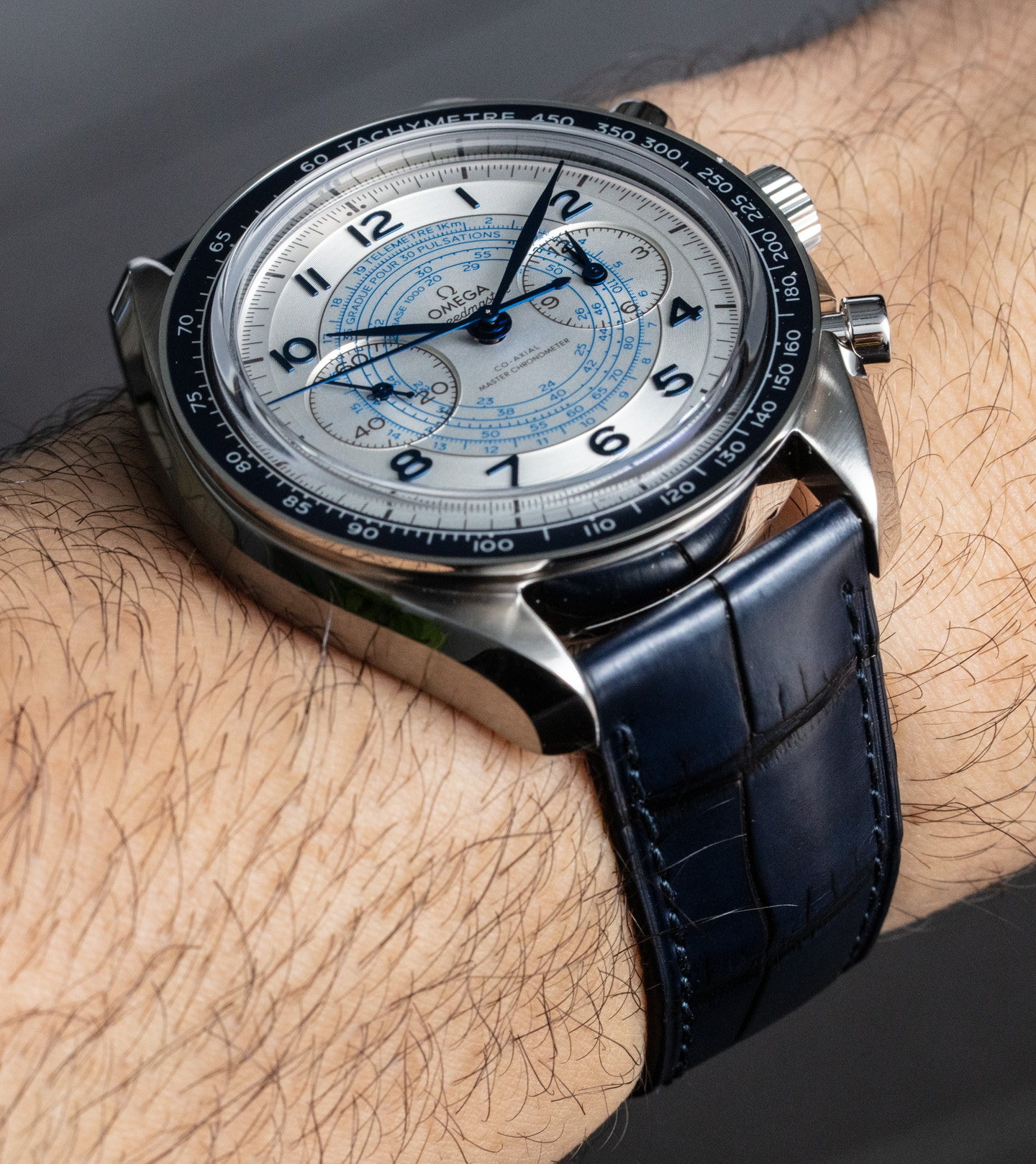
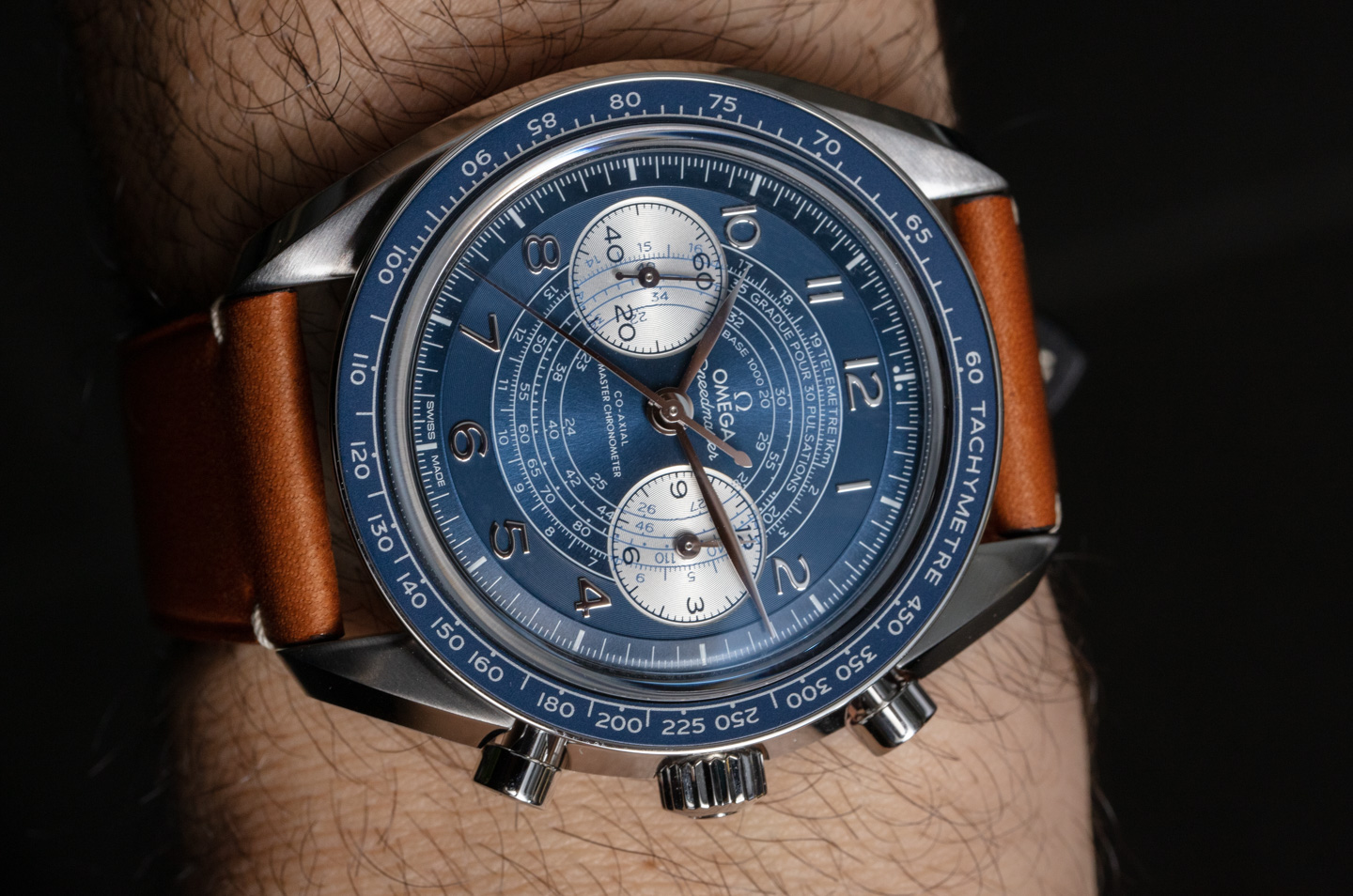
Other scales on the dial include a telemeter (for measuring the distance of objects) as well as a pulsometer (for measuring heart rate) provided the user has the correct reference points. Calculations are performed by observing a reference point and then starting the chronograph. Once the second reference point is observed, the chronograph is manually stopped and the correct measurement is read where the chronograph had stops. Because this chronograph operation can be used for multiple purposes, it became popular for watch dials at the time to include a variety of scales on the dial. The challenge for designers was simply how to make busy watch dials still look attractive.
Some tachymeter/telemeter/pulsometer watches featured spiral-style “snailed” scales on the dial. For the Chronoscope, Omega opted for a more symmetrical look that features a few concentric circles that include the important scale information while also not materially distracting from core dial legibility. Omega uses applied Arabic hour numerals for most of the markers, which, in combination with the traditional leaf-style hands, make for good legibility on most models. The blue dial and brown dial versions have polished markers and hands, which aren’t as easy to read as the blued or black markers and hands that are on other versions of the Chronoscope.
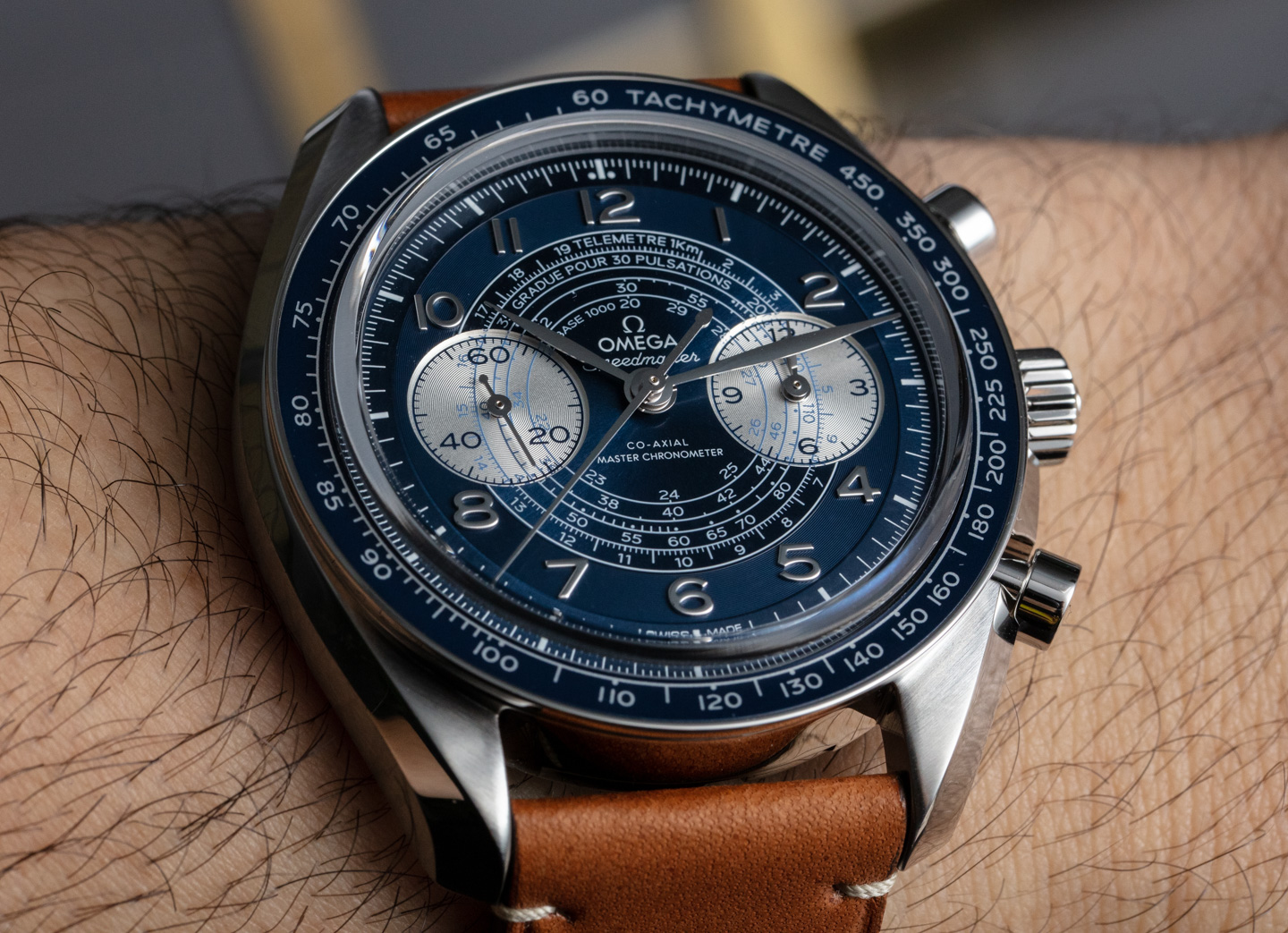
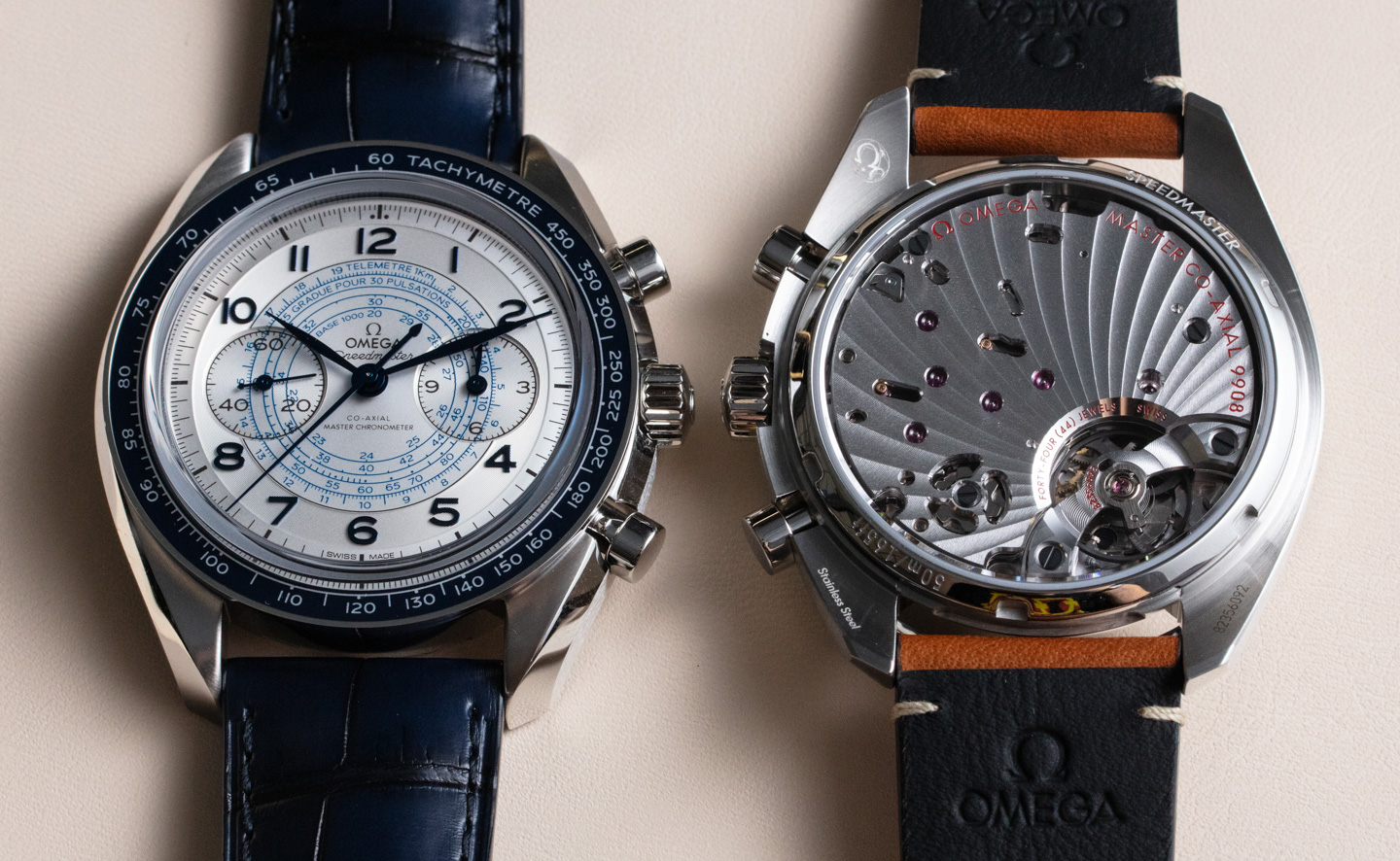
While I didn’t get a chance to see it myself yet, the light sliver with black and a touch of red version of the Speedmaster Chronoscope — reference329.30.43.51.02.002 (on the bracelet) — is probably the sportiest and modern, even though it has that slick retro-style design. That’s really the overall appeal of this watch; these older sports watch faces just look stylish, timeless, masculine, and also elegant. I challenge anyone to actually use the measurement features on the dial, but in any event, it is a very handsome-looking dial.
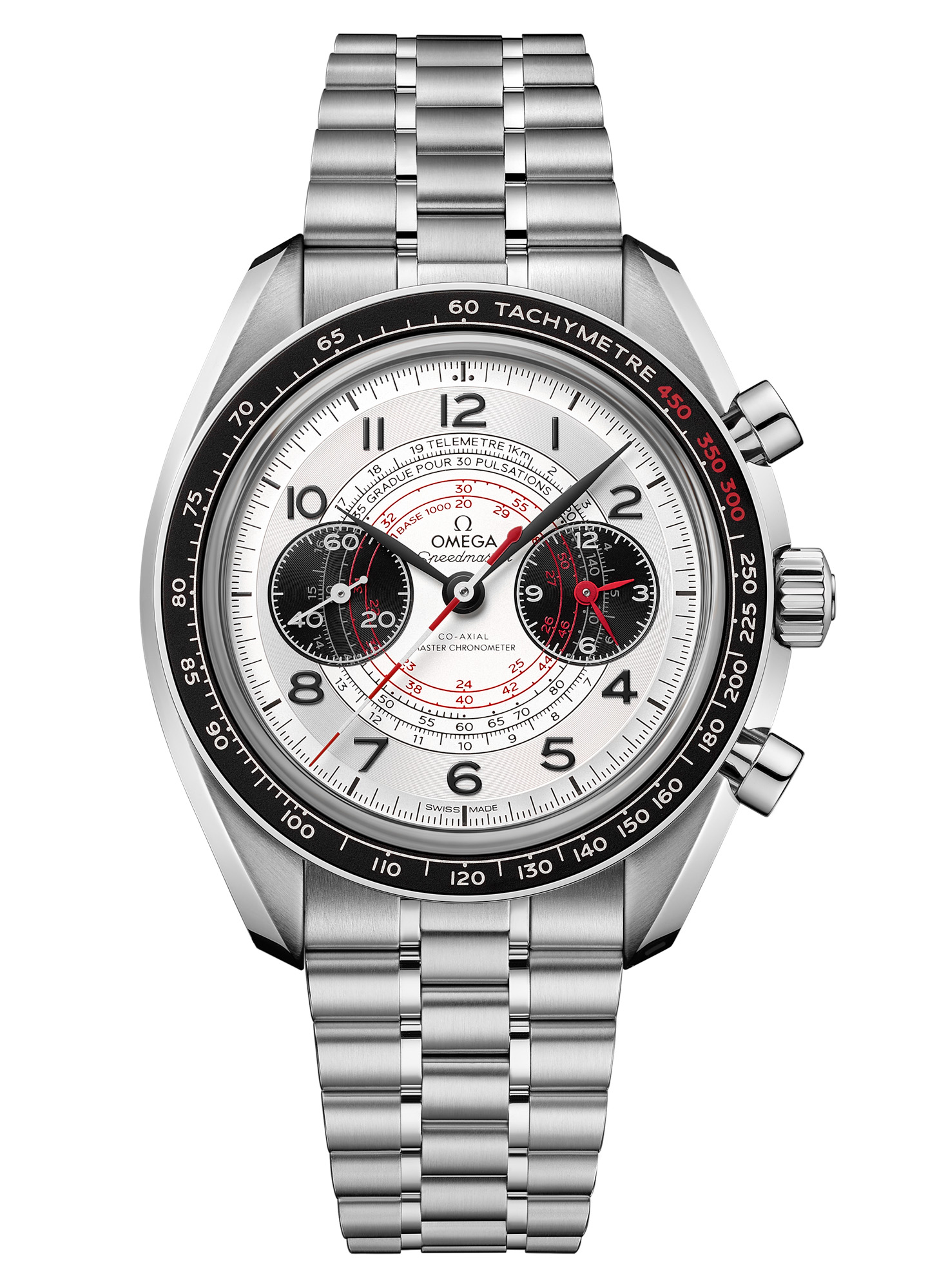
With its thinner case, box-style sapphire crystal over the dial, vintage-style chronograph dial, and manually wound movement, the Speedmaster Chronoscope Co-Axial Master Chronometer watches are a unique value proposition and not just another flavor of an existing watch with a new dial. In fact, Omega seems to implicitly understand that consumers really don’t consider additional dials as the reason to call a timepiece “new.” Thus, we see a company making a swathe of new parts and mixing concepts intelligently when it comes to this and many of the other new Omega watches we have been seeing. I also want to stress that anyone interested in the Omega Speedmaster Chronoscope watches should actually try them on. This is because the cases have a unique appeal (thin size, but not too narrow), and the appeal of the dials is very east to appreciate in person. Aside from the bronze-gold version of the Chronoscope, the other three currently available dial versions come either on a strap or matching steel bracelet. The two photographed Chronoscope watches are the references 329.33.43.51.02.001 (silver dial), and 329.32.43.51.03.001 on leather straps. Price for the Omega Speedmaster Chonoscope Co-Axial Master Chronometer Chronograph 43mm-wide watch is $8,300 USD in steel on the strap, $8,600 USD in steel on the steel bracelet, and $14,000 USD in bronze gold. Learn more at the Omega watches website here.

